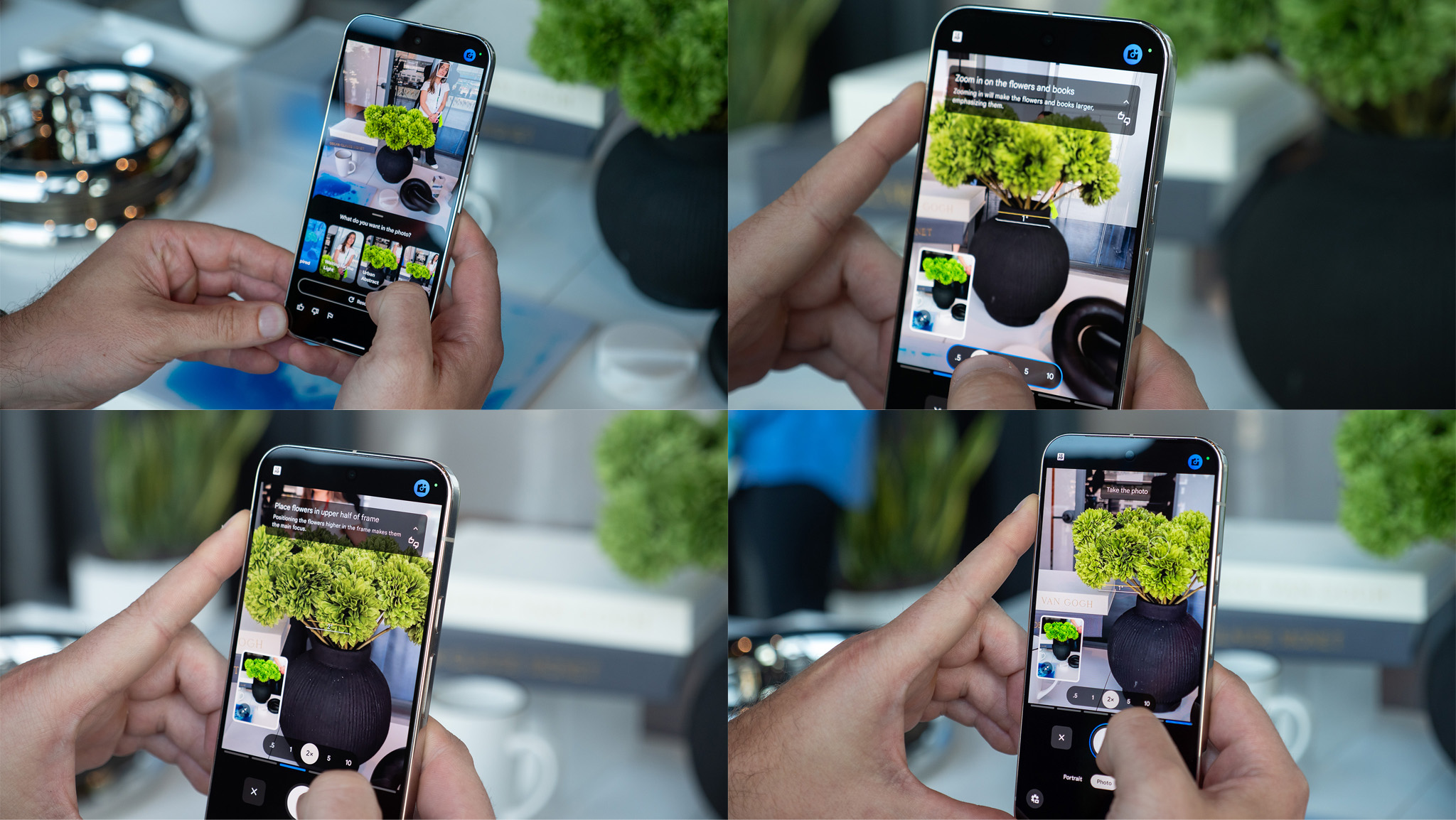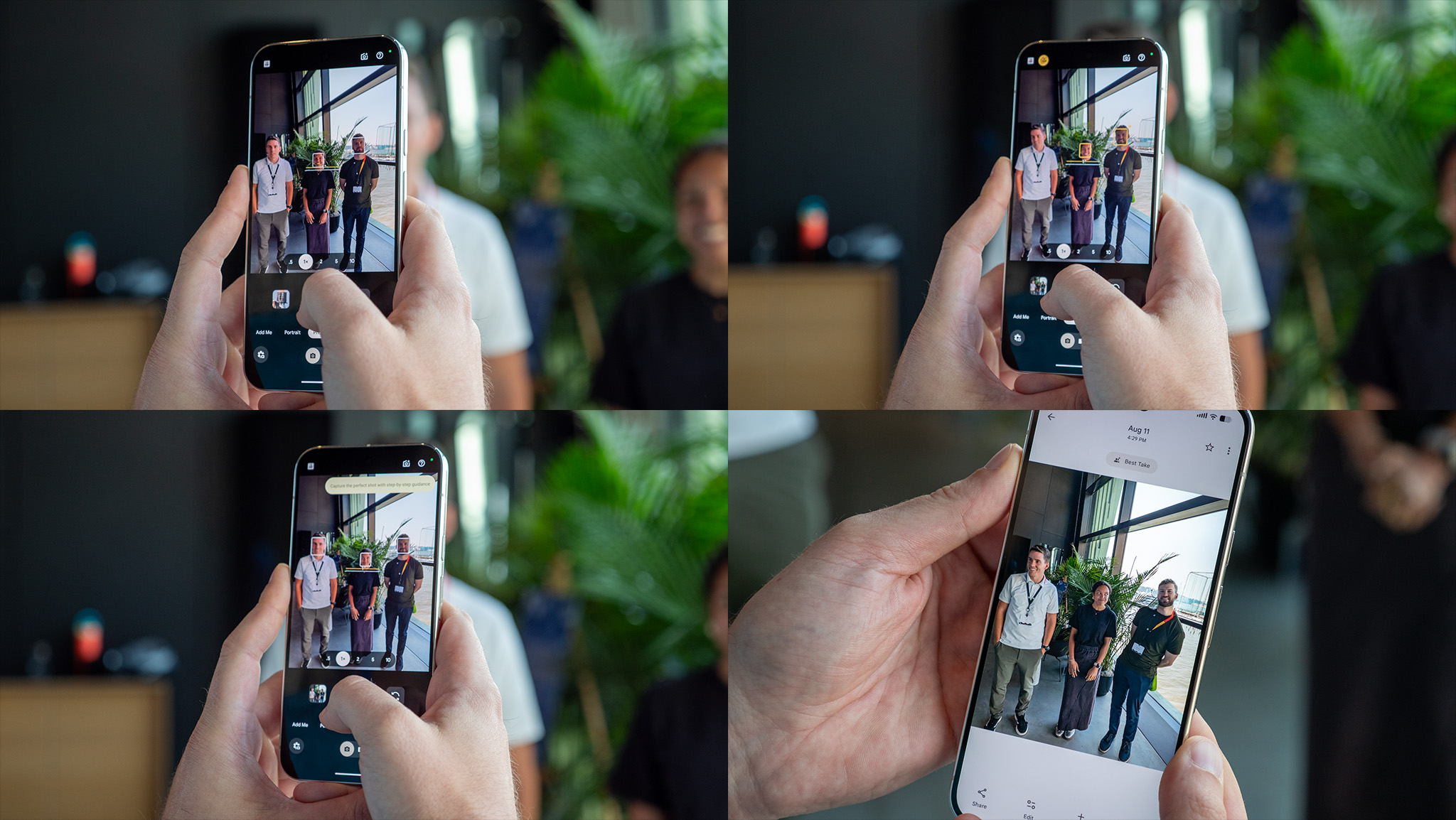Google Pixel 10 series hands-on: A bigger upgrade than you think
They may look nearly identical on the surface, but under-the-hood upgrades mark the most important Pixel release in years.
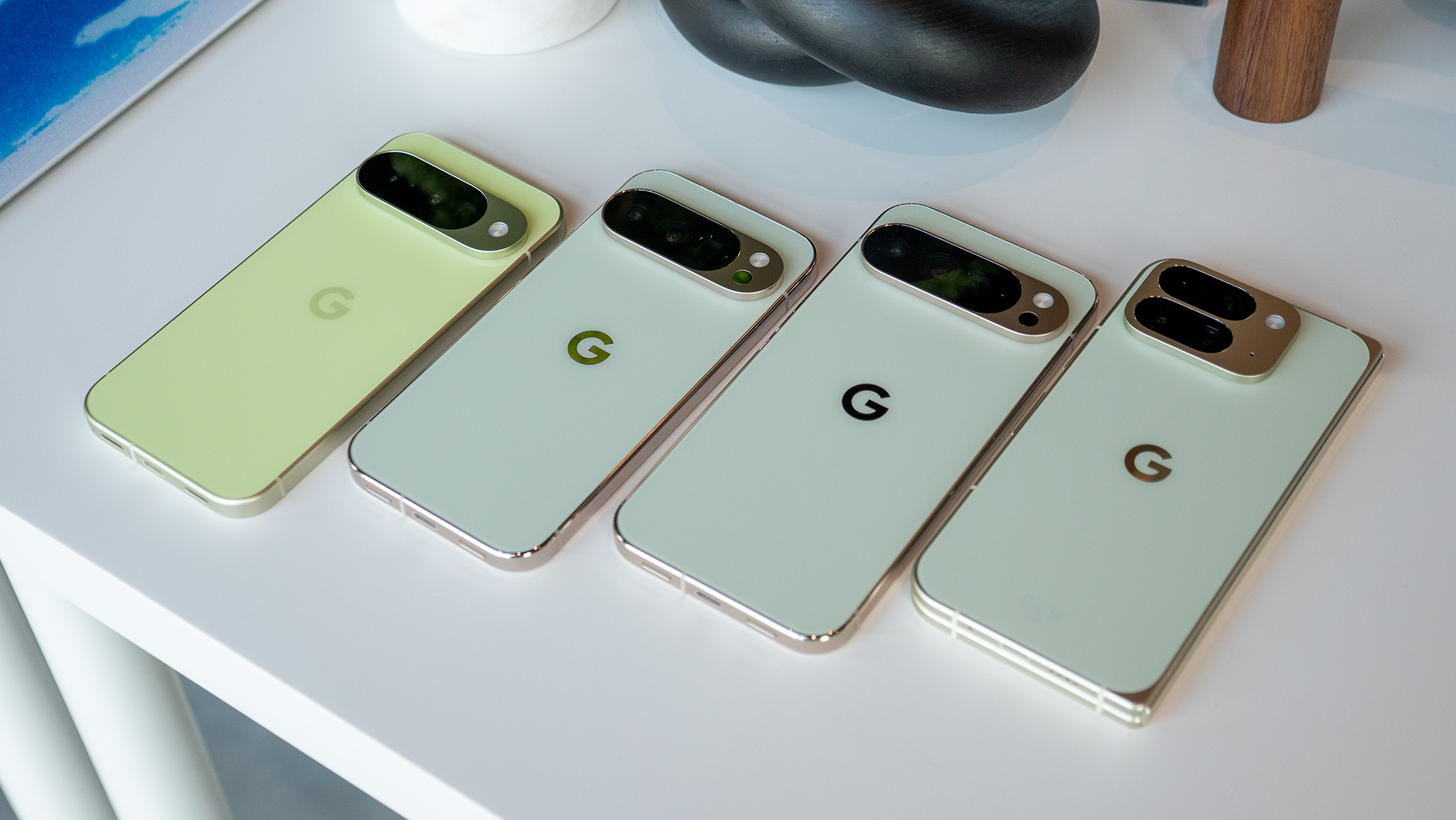
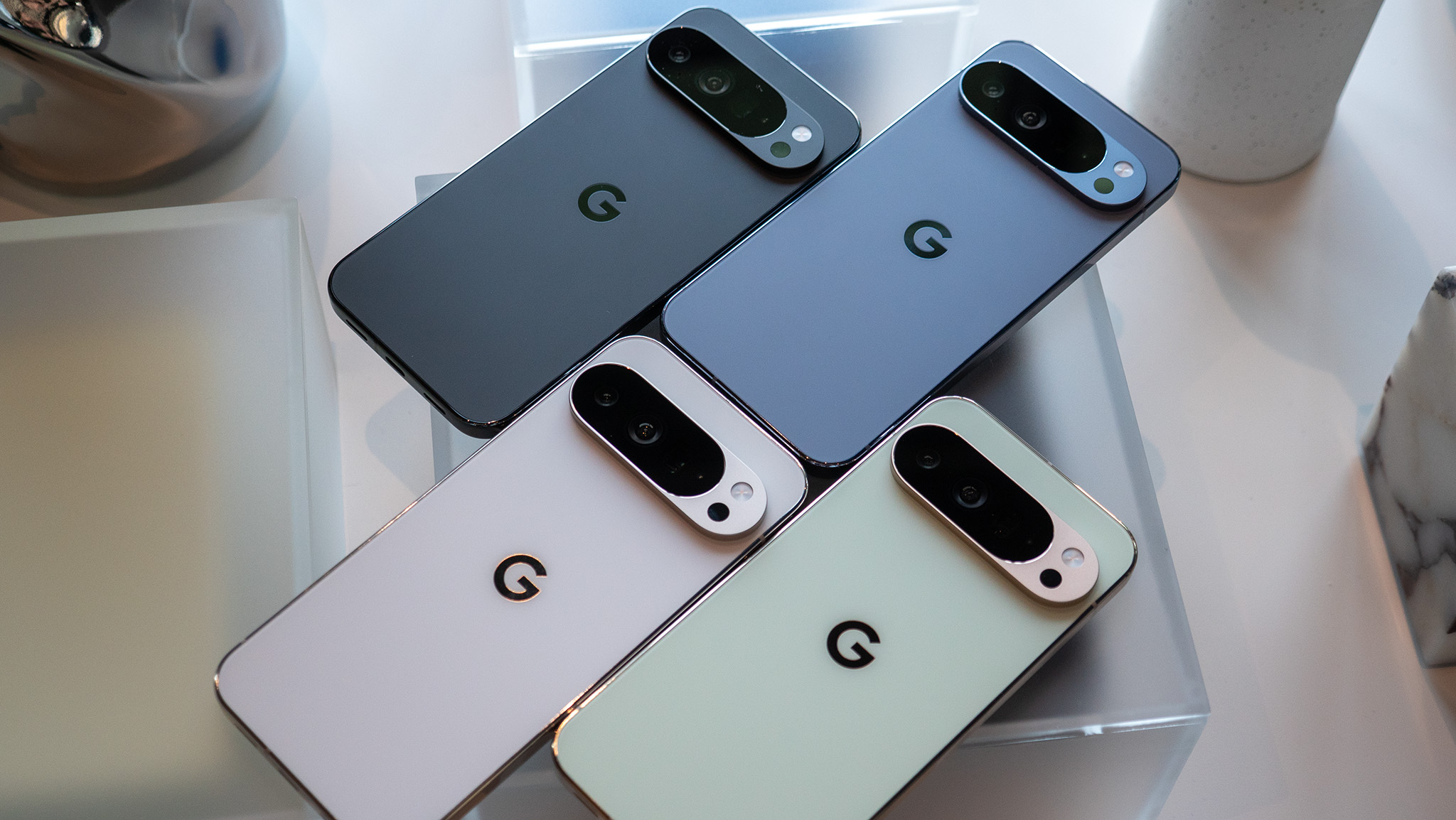
At first glance, the Pixel 10 series looks like Google's most boring release in ages. I can't remember the last time a Pixel phone looked identical to the previous year's model, but looking at it like that feels a lot like judging a book by its cover.
Inside is a brand new processor, the first Google-designed fully in-house without Samsung's help, and represents the biggest leap for Pixels since the original Tensor G1's 2021 release. The Pixel 10 is also the first major Android phone series with Qi2 MagSafe support, the first U.S. Android phone without a physical SIM slot, and a lot of other firsts for Google that you'll be impressed with.
In this hands-on article, we're focusing on the base Google Pixel 10, as well as the Pixel 10 Pro and Pixel 10 Pro XL. If you're interested in reading about Google's third-generation foldable phone, check out our Google Pixel 10 Pro Fold hands-on!
For more news and information on Google's latest phones, check out our Ultimate Guide.
Google Pixel 10: Specs
Category | Pixel 10 | Pixel 10 Pro | Pixel 10 Pro XL |
|---|---|---|---|
Display | 6.3-inch Actua OLED, 1080 x 2424, 422 PPI, 60-120Hz, 3000 nits | 6.3-inch Super Actua OLED, 1280 x 2856, 495 PPI, 1-120Hz, 3300 nits | 6.8-inch Super Actua OLED, 1344 x 2992, 486 PPI, 1-120Hz, 3300 nits |
Processor | Google Tensor G5 | Google Tensor G5 | Google Tensor G5 |
Memory and storage | 12GB, 128GB/256GB | 16GB, 128GB/256GB/512GB/1TB | 16GB, 256GB/512GB/1TB |
Cameras | 48MP main with macro focus, 13MP 120-degree ultrawide, 10.8MP 5x telephoto, 10.5MP 95-degree Dual PD AF selfie, 4K/60 10-bit HDR on all cameras | 50MP main, 48MP 123-degree ultrawide with macro focus, 48MP 5x telephoto, 42MP 103-degree Dual PD AF selfie, 4K/60 10-bit HDR on all cameras, 8K/30 on rear cameras | 50MP main, 48MP 123-degree ultrawide with macro focus, 48MP 5x telephoto, 42MP 103-degree Dual PD AF selfie, 4K/60 10-bit HDR on all cameras, 8K/30 on rear cameras |
Security | Titan M2 chip, Ultrasonic fingerprint sensor, single-camera face unlock, Google VPN | Titan M2 chip, Ultrasonic fingerprint sensor, single-camera face unlock, Google VPN | Titan M2 chip, Ultrasonic fingerprint sensor, single-camera face unlock, Google VPN |
Battery and charging | 4970mAh, 30W wired, 15W Qi2 Pixelsnap wireless | 4870mAh, 30W wired, 15W Qi2 Pixelsnap wireless | 5200mAh, 45W wired, 25W Qi2.2 Pixelsnap wireless |
Dimensions | 152.8mm x 72mm x 8.6mm | 152.8mm x 72mm x 8.6mm | 162.8mm x 76.6mm x 8.5mm |
Weight | 204g | 207g | 232g |
Durability | Gorilla Glass Victus 2 front-and back, IP68 | Gorilla Glass Victus 2 front-and back, IP68 | Gorilla Glass Victus 2 front-and back, IP68 |
OS and updates | Android 16, 7 years of OS and security updates (until Android 23) | Android 16, 7 years of OS and security updates (until Android 23) | Android 16, 7 years of OS and security updates (until Android 23) |
Connectivity | Wi-Fi 6E, Bluetooth v6, NFC, Dual-band GPS, 5G mmWave (NA only), 5G Sub-6, LTE | Wi-Fi 7, Bluetooth v6, NFC, Dual-band GPS, 5G mmWave (NA only), 5G Sub-6, LTE | Wi-Fi 7, Bluetooth v6, NFC, Dual-band GPS, 5G mmWave (NA only), 5G Sub-6, LTE |
SIMs | Dual eSIM (U.S. only), single nano SIM and one eSIM (global models) | Dual eSIM (U.S. only), single nano SIM and one eSIM (global models) | Dual eSIM (U.S. only), single nano SIM and one eSIM (global models) |
Colors | Indigo, Frost, Lemongrass, Obsidian | Moonstone, Jade, Porcelain, Obsidian | Moonstone, Jade, Porcelain, Obsidian |
Google Pixel 10 Pro and 10 Pro XL
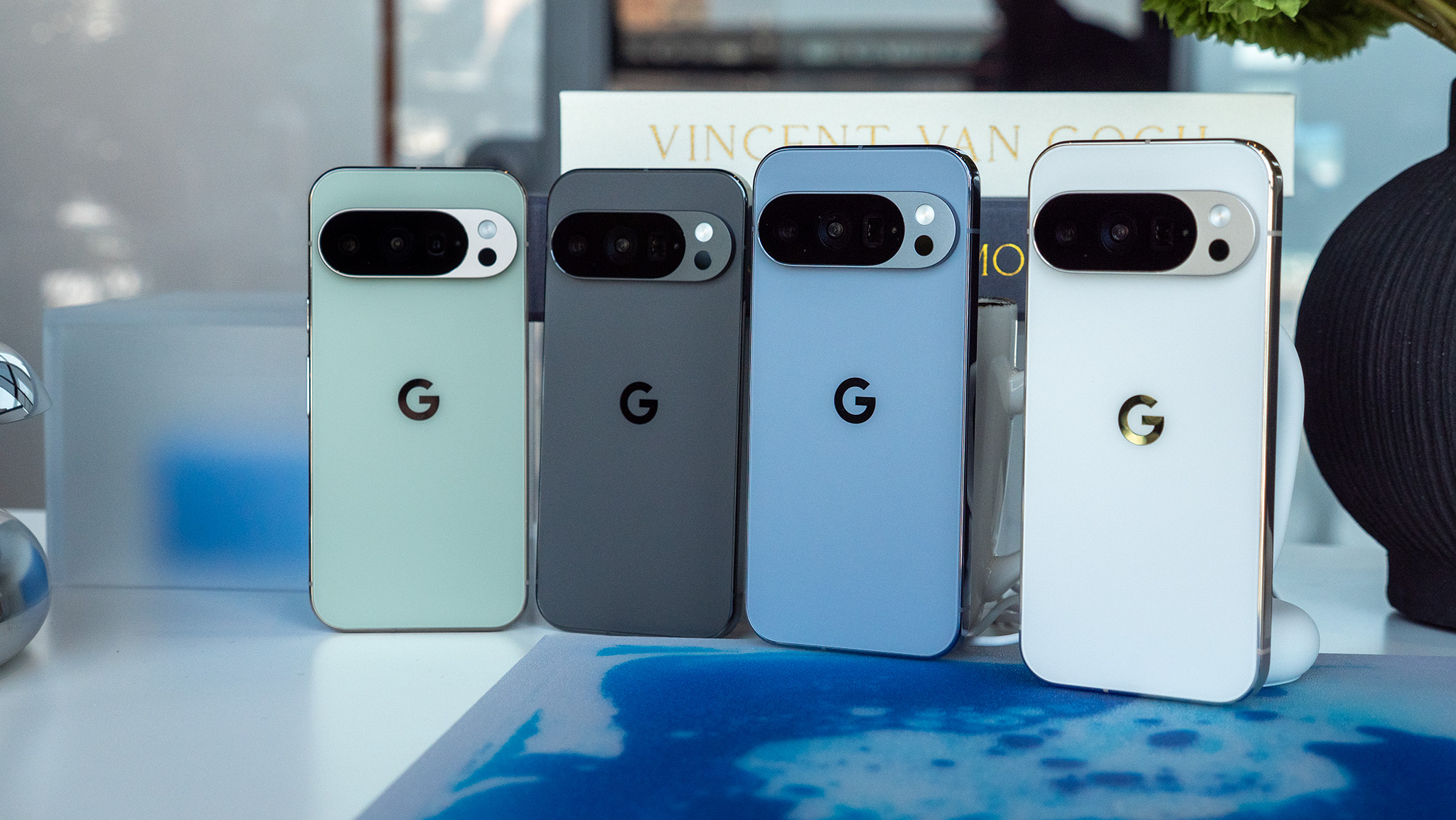
While the Google Pixel 10's back might be a reflective nightmare, the Pixel 10 Pro and Pixel 10 Pro XL both sport lovely matte glass backs. Curiously enough, Google also swapped out the Pixel 10's matte side rails with shiny ones on the Pro models, giving these phones a polar opposite look. I far prefer the Pro's choice of materials here.
U.S. models of both Pro phones also look sleeker than ever, thanks to the removal of the 5G mmWave "pill" and the SIM tray. I'm not a fan of removing the physical SIM tray, but it does visually look a little nicer to have symmetrical speaker grilles on the bottom instead of one speaker and one SIM tray slot.
The Pixel 10 Pro and Pixel 10 Pro XL ship in Moonstone, Jade, Porcelain, and Obsidian colorways. While Moonstone is what Google calls the "flagship" color for this year, I think the Jade color is the one that really stands out.
Get the latest news from Android Central, your trusted companion in the world of Android
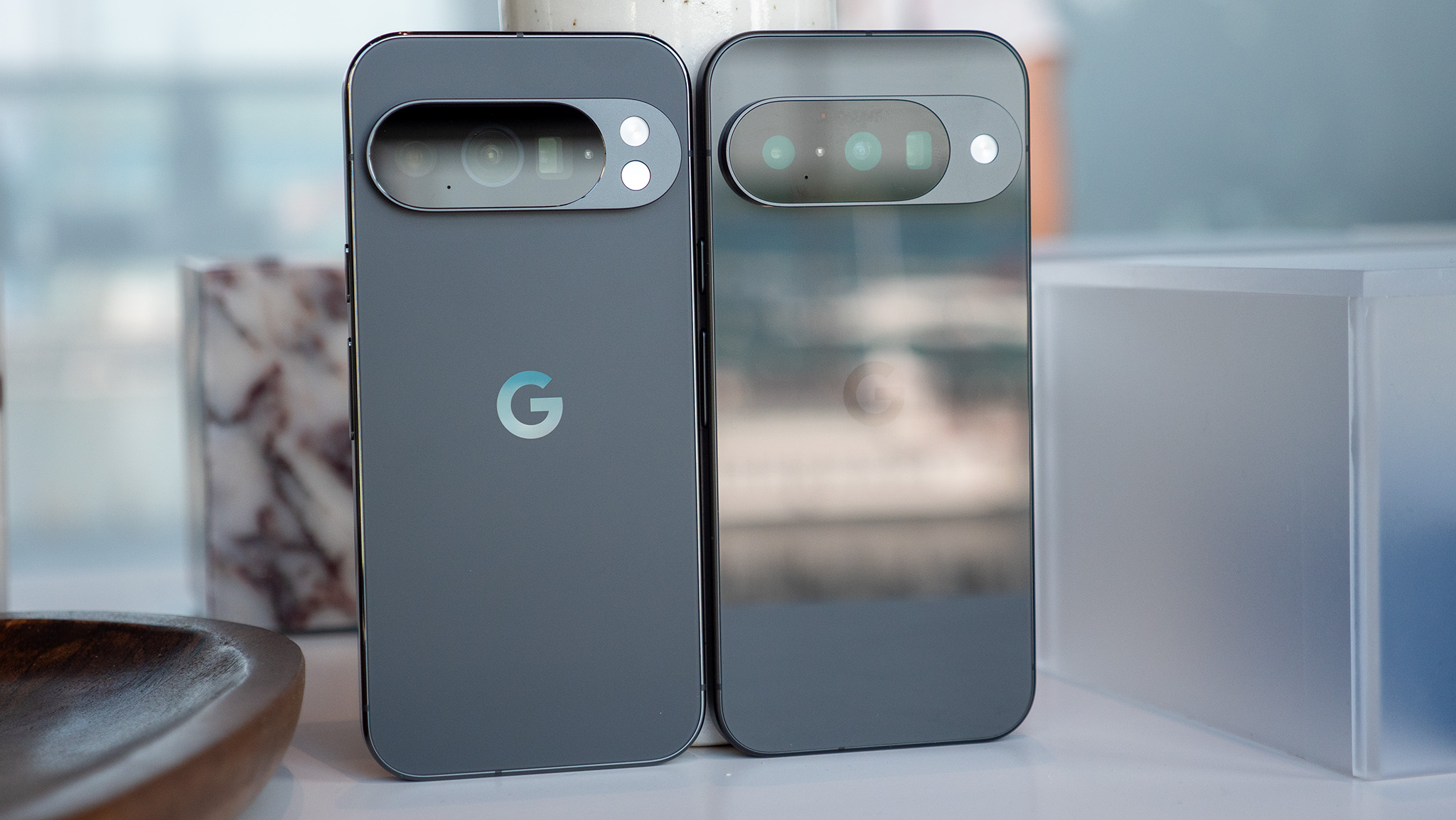

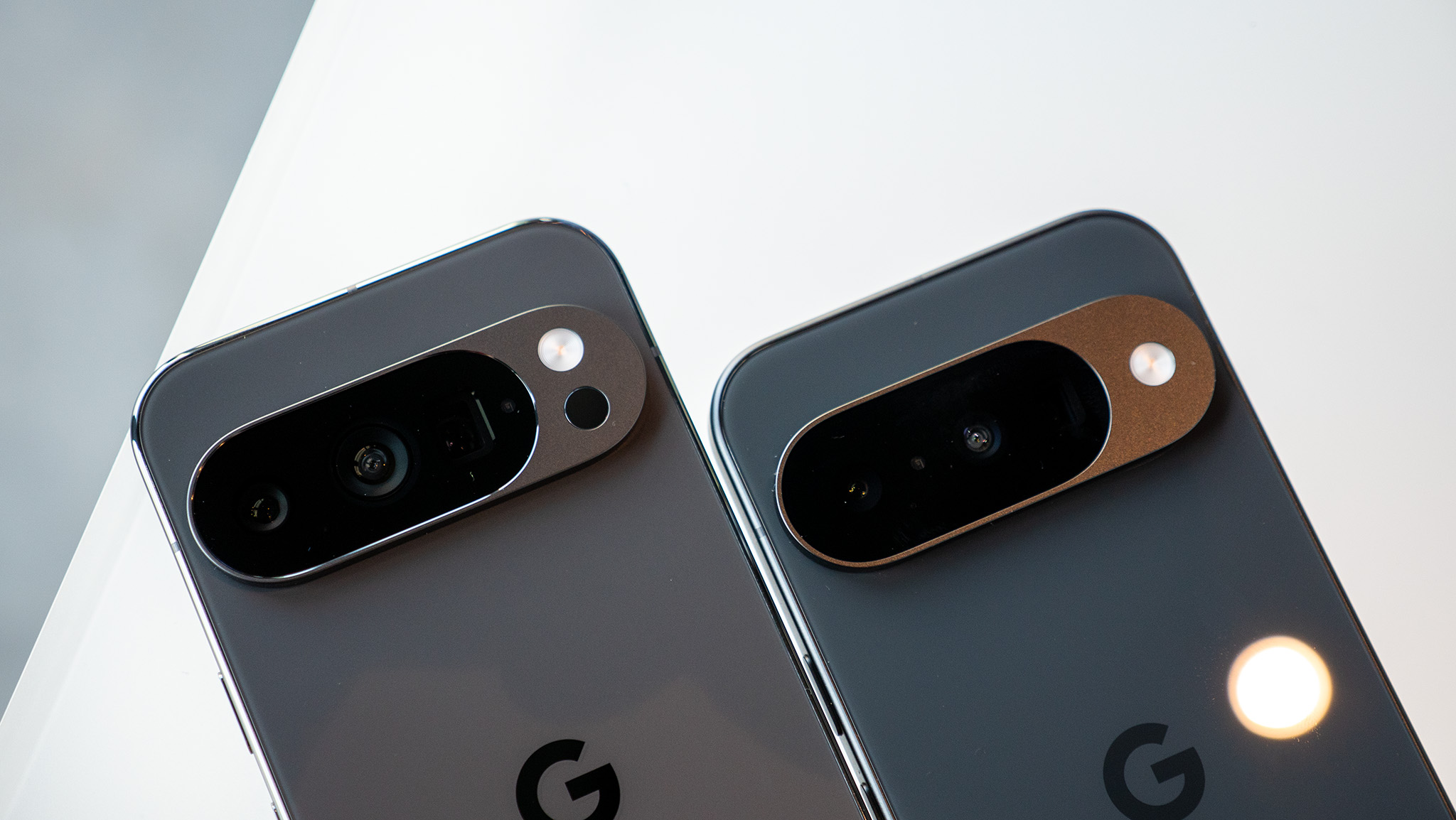

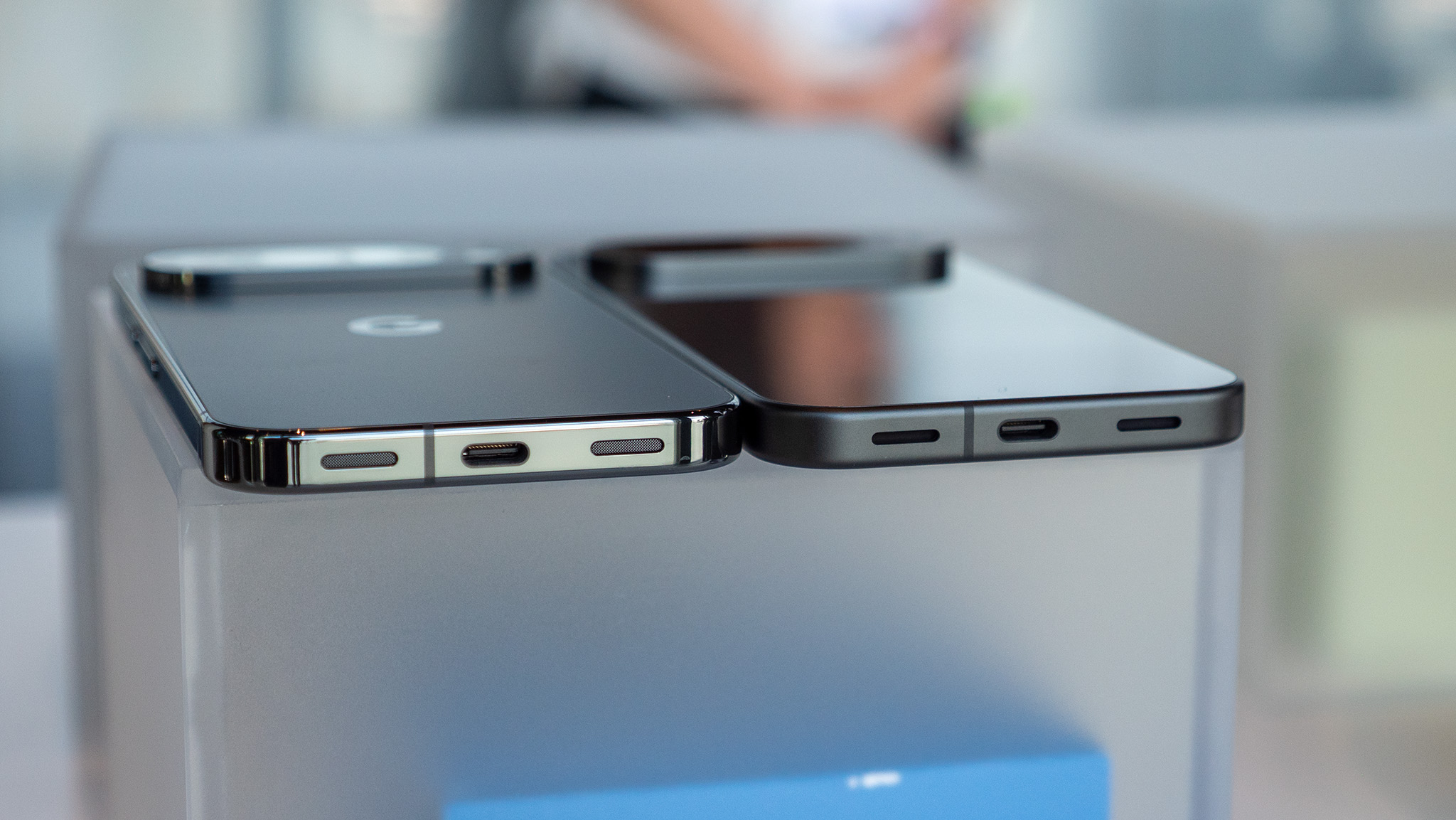


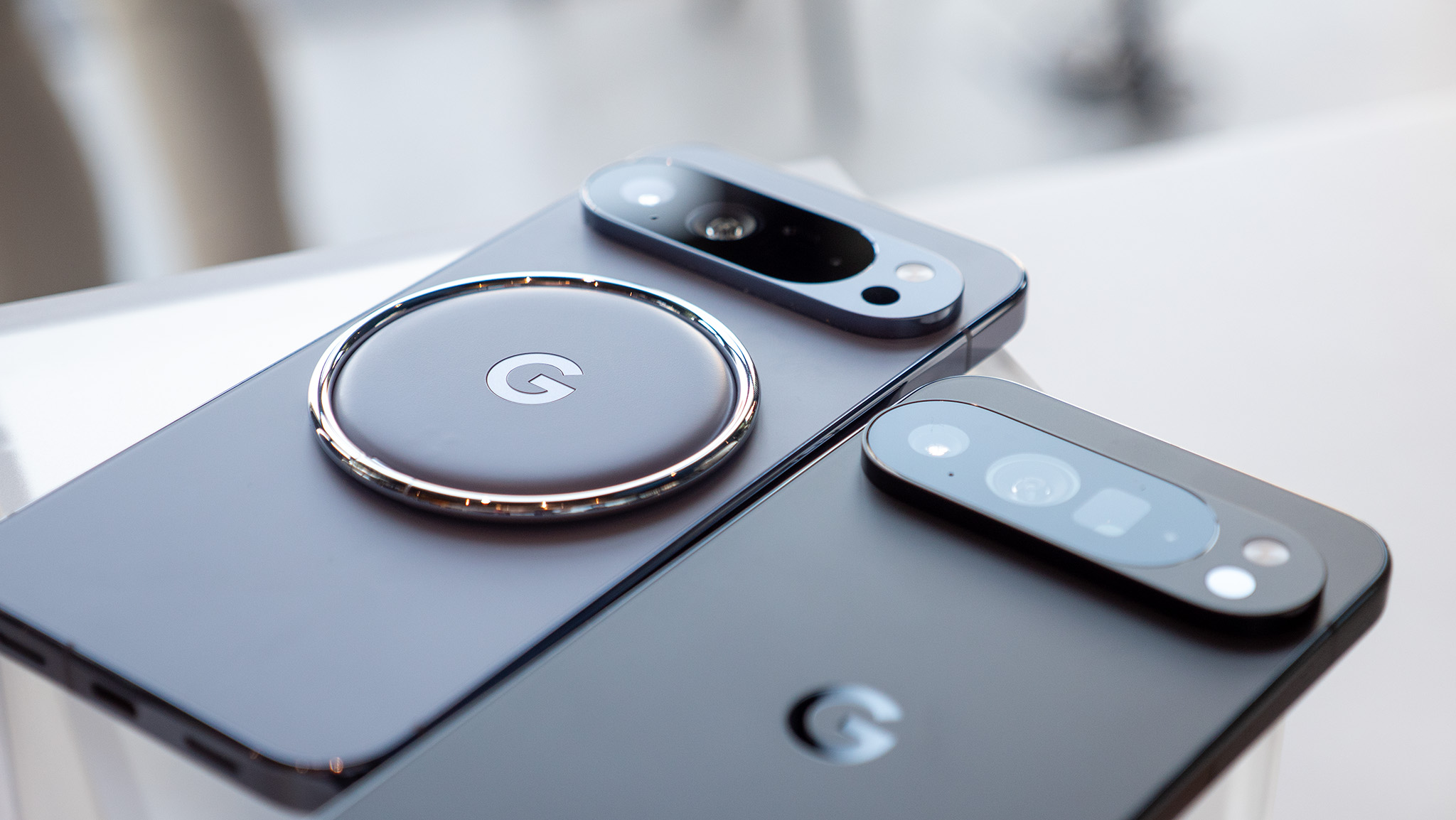
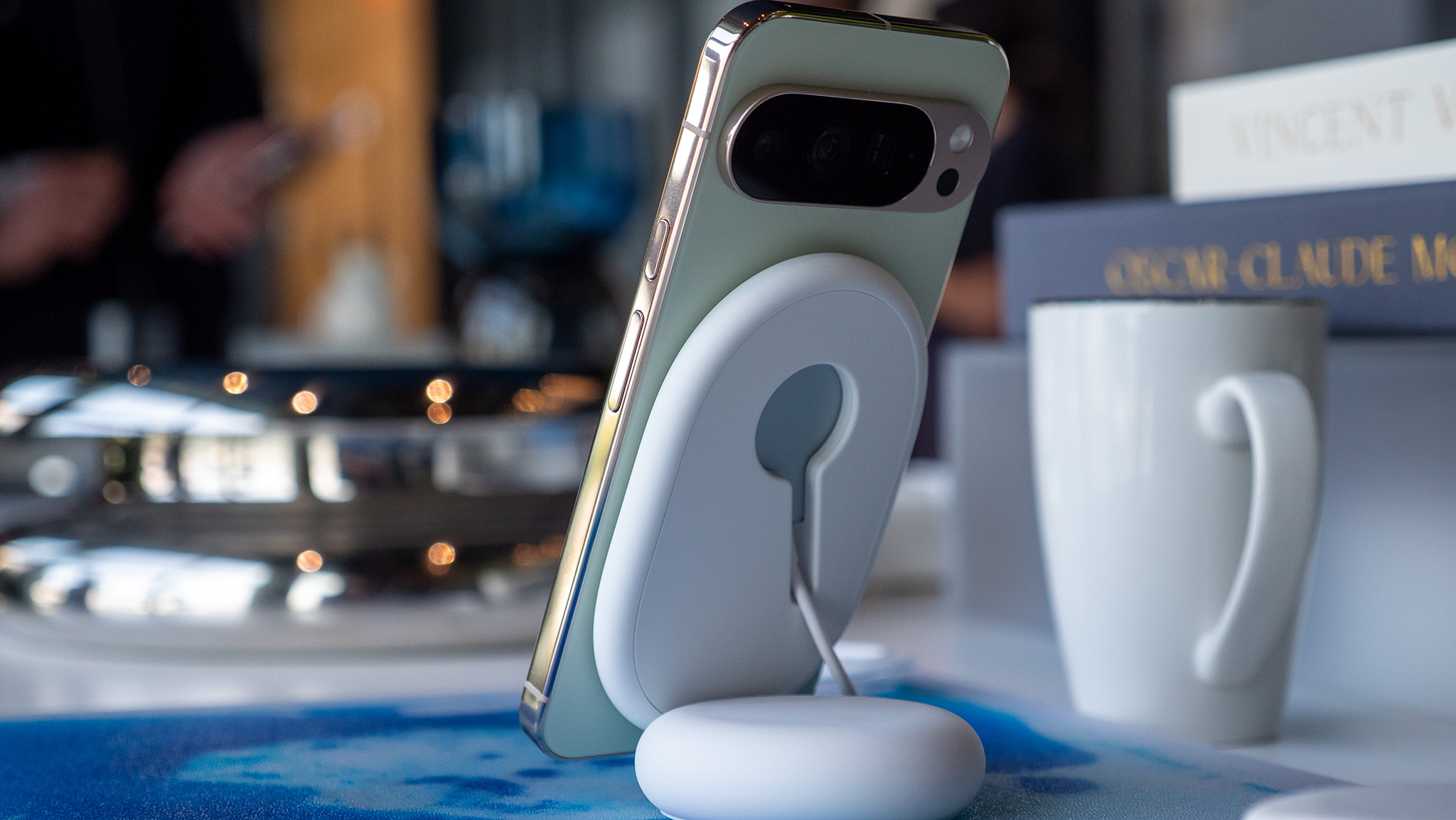
Of course, the real star of the hardware upgrades this year is Pixelsnap, a new set of magnets inside all Pixel 10 models that allow Qi2 charging and support all MagSafe attachments. That marks the first flagship Android phone series with proper MagSafe support without the need for a Qi2 case.
Google has slimmed up the metal frame around the camera modules, and this gives the appearance of bigger, better sensors (even though this is the same camera hardware on the Pixel 9 Pro). Any of the new improvements in camera quality are thanks to Tensor G5 and the new Google-built ISP.
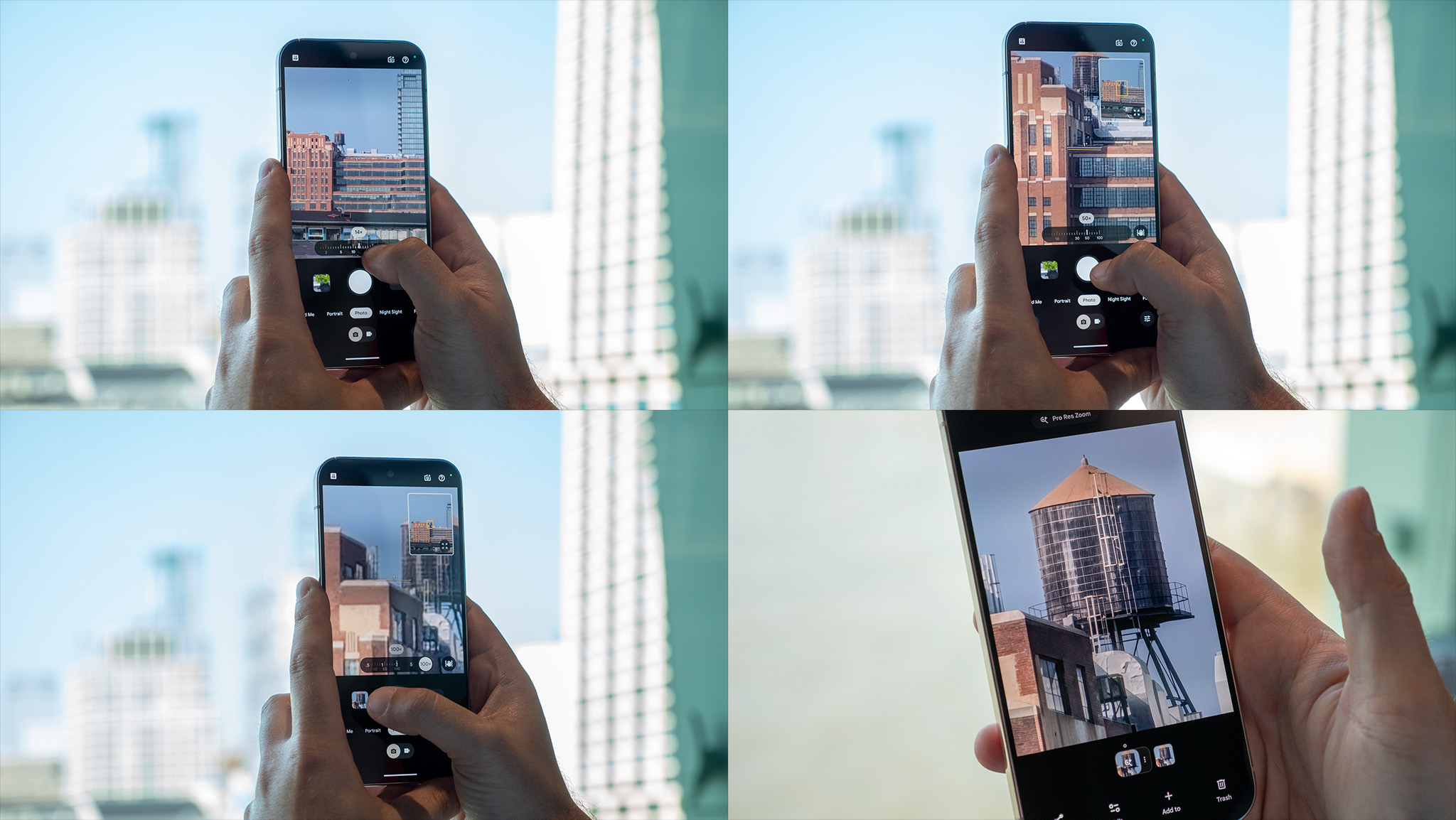
Pro Level Zoom got a huge upgrade on Pixel 10 Pro models and now allows users to zoom up to 100x away with the phone's camera using an on-device LLM model specifically trained for image enhancement. We'll have to see how this stacks up against Samsung's 100x Space Zoom.
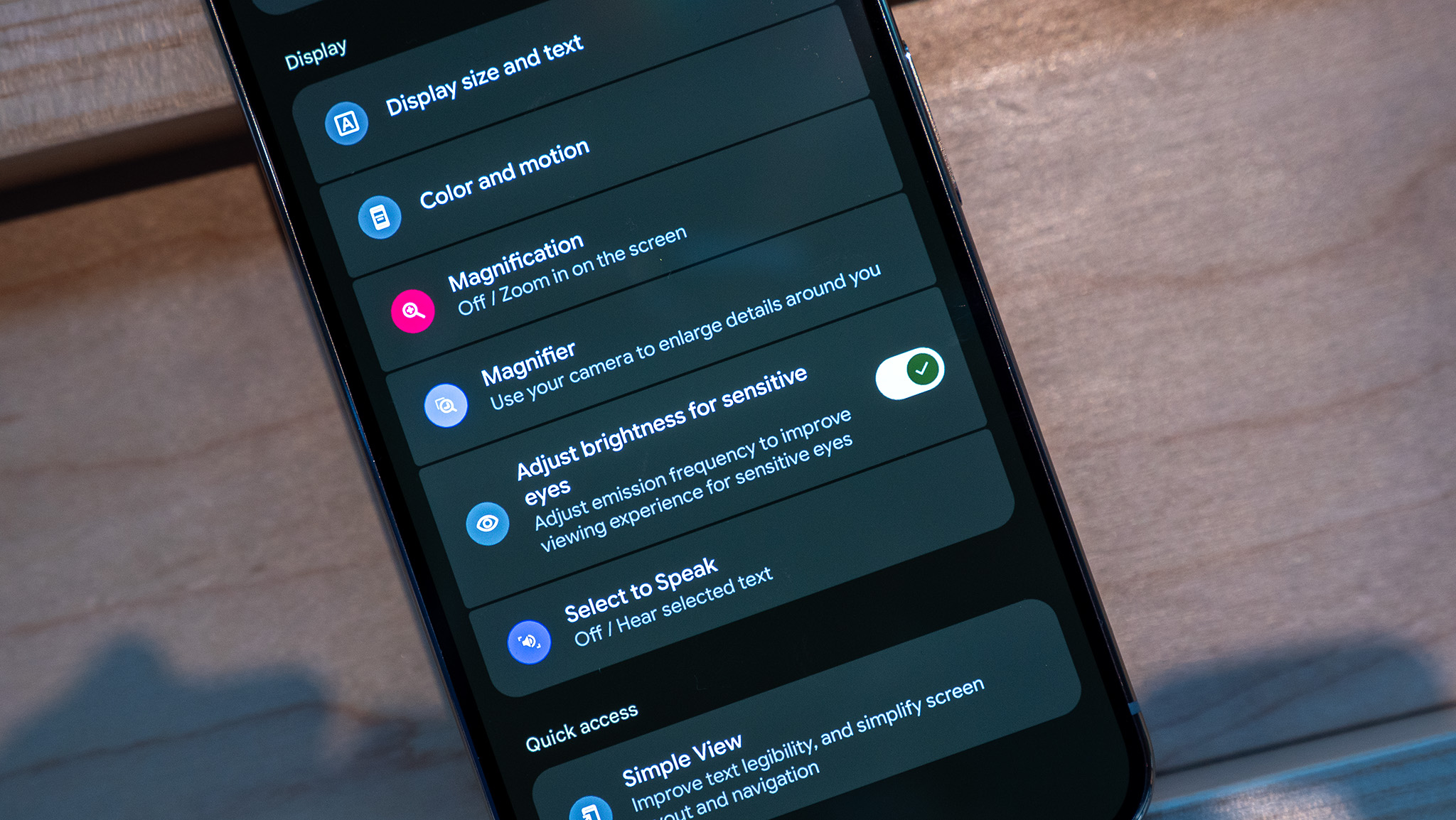
This year's displays feature a slight bump in brightness, up to a 3300-nit peak, in addition to a long-awaited new accessibility feature for PWM-sensitive people. This new feature, located in accessibility settings, claims to "improve the viewing experience for sensitive eyes."
We weren't able to do any in-depth testing on this new feature, but we were able to pick up a visual change in PWM rate with a 1/6400 camera shutter speed.
Google Pixel 10
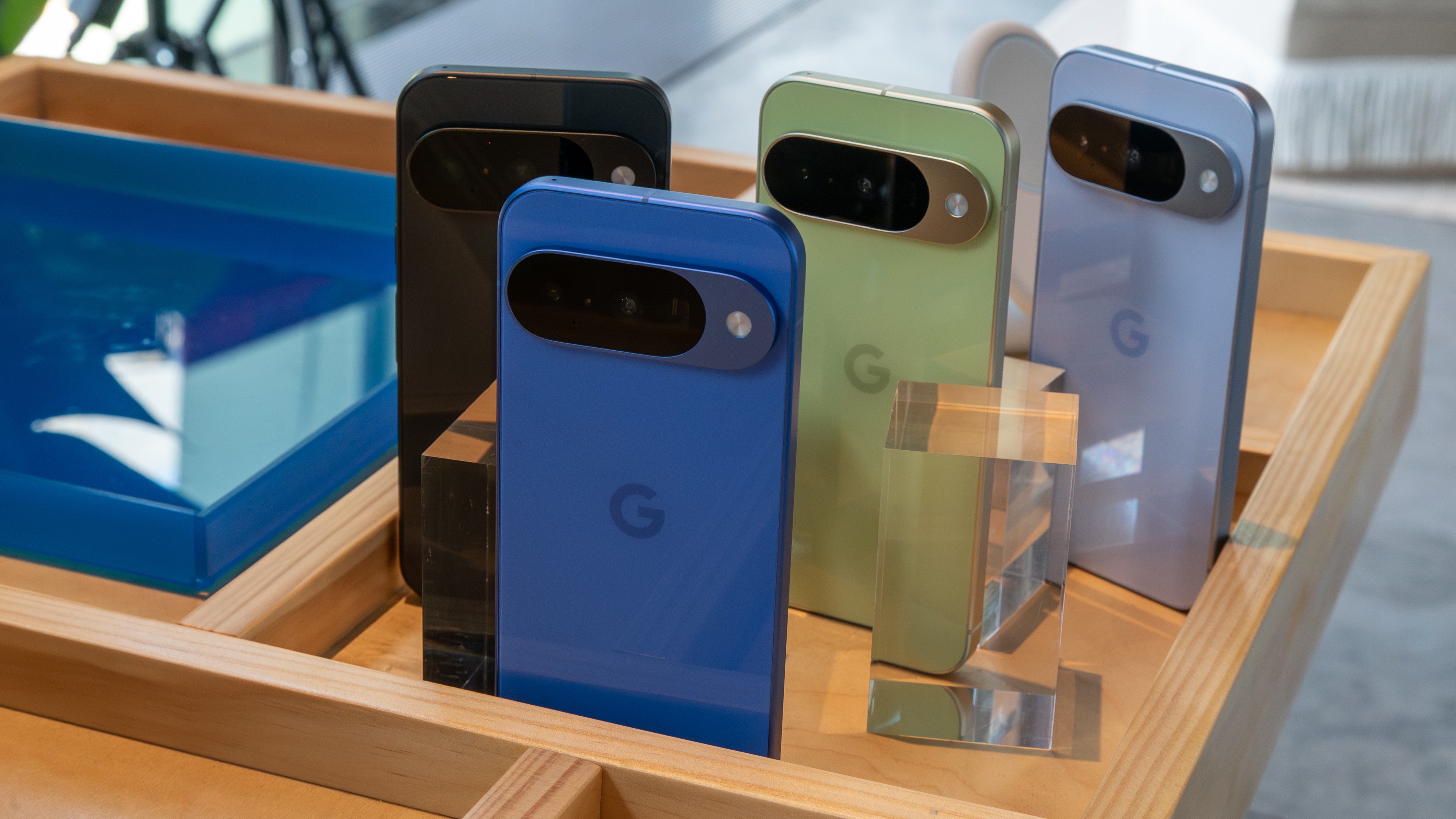
Aside from the new Tensor G5 chipset, the Pixel 10 now features a third camera on the back, adding a 5x telephoto lens. We couldn’t be happier about this change, as its omission was one of the main points that separated the Pixel 9 from other similarly-priced phones, such as the Galaxy S25.
The new sensor extends the Pixel’s digital zoom range to 20x, up from 8x, and while it can't match the 30x zoom of some competitors, it's great to see Google pushing its base model to new heights.
Unfortunately, despite the new chip and added telephoto lens, Google still restrains the Pixel 10 capabilities. You won’t find full-resolution photos, Pro Res 100x zoom, Pro Controls, Video Boost, Night Sight video, or 8K video recording. None of these are deal-breakers for me, but it’s unfortunate that Google is still gatekeeping these features behind the more expensive models.
Fortunately, you still get full Qi2 support on the base Pixel 10.
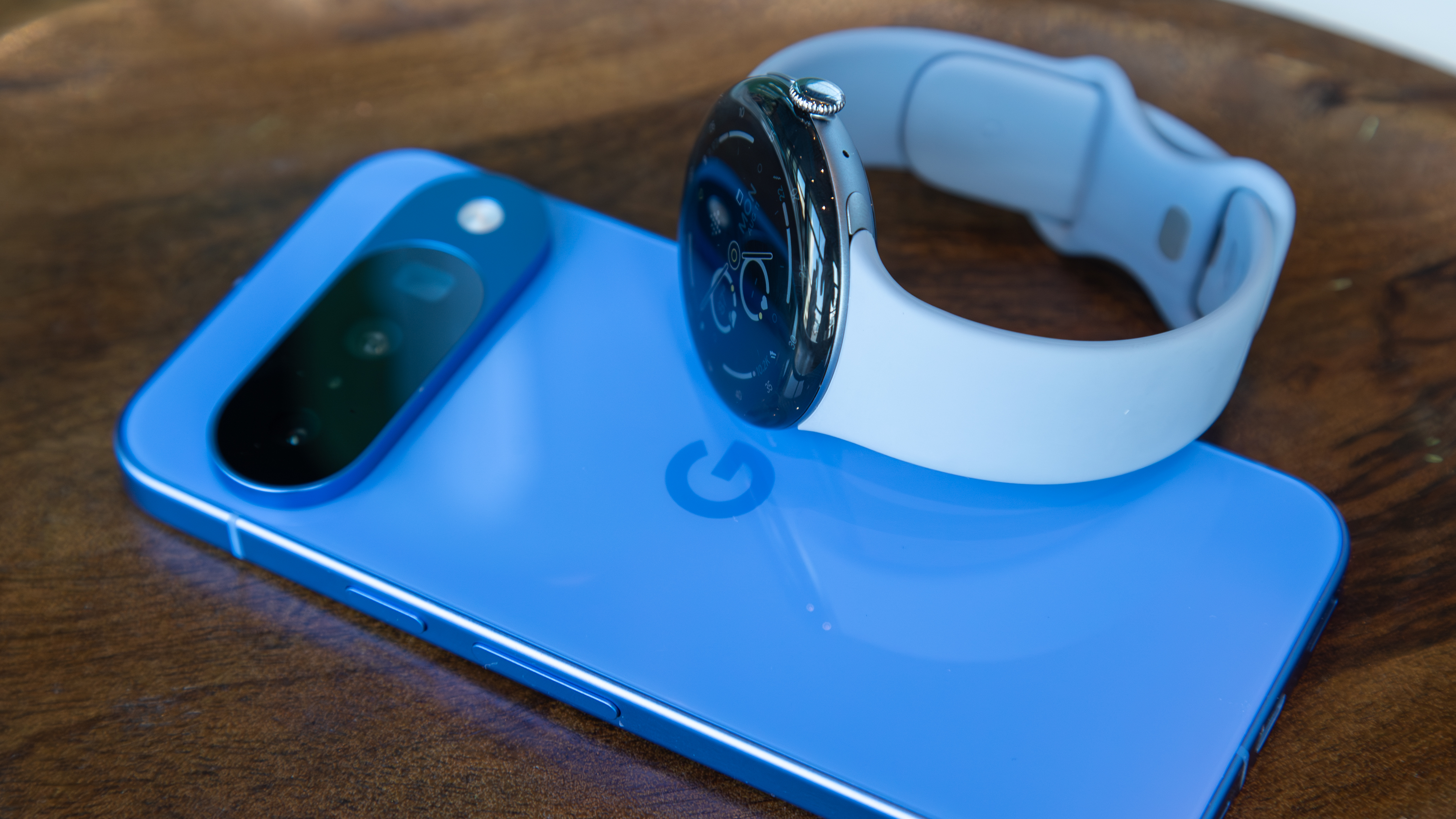
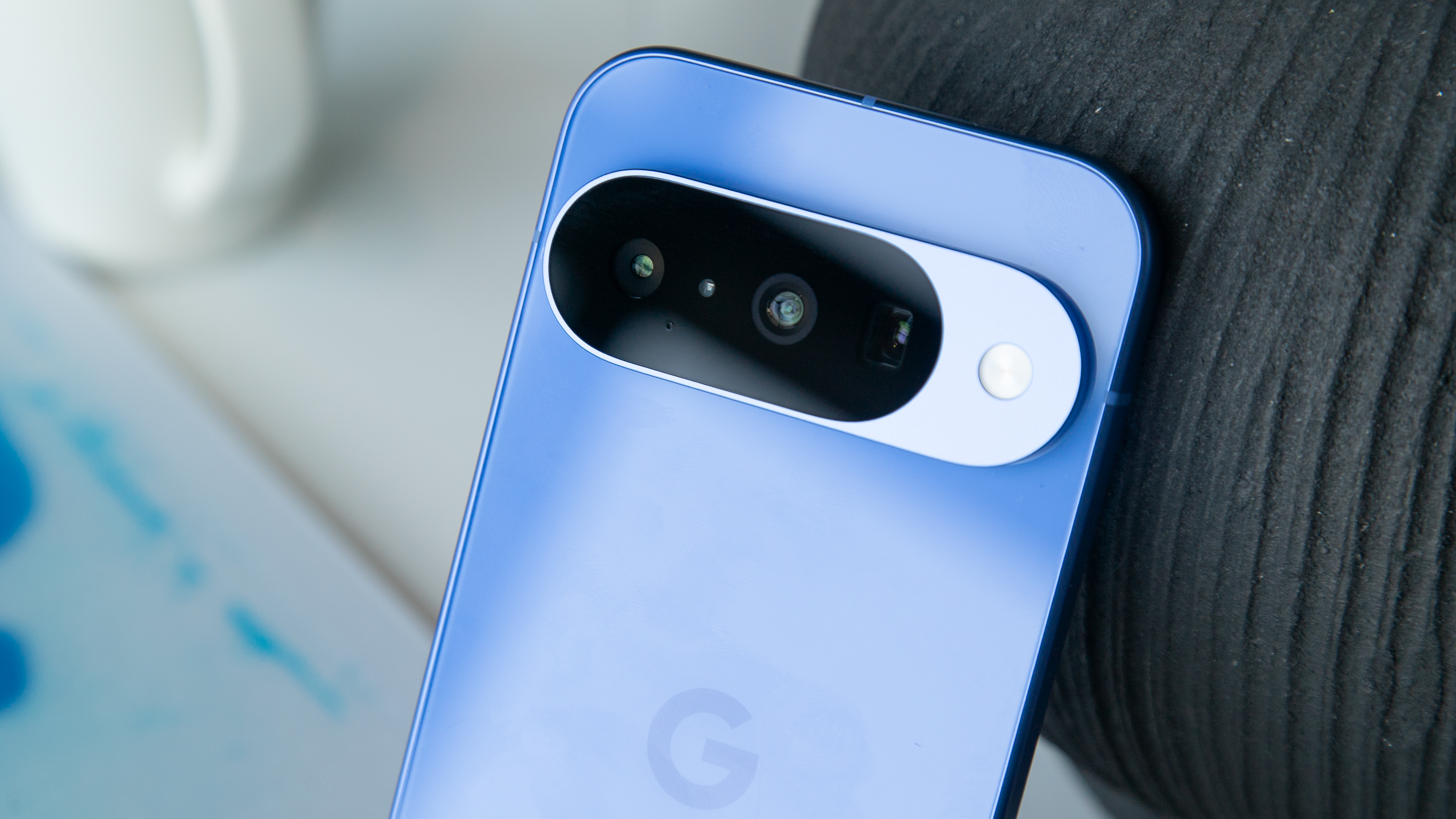
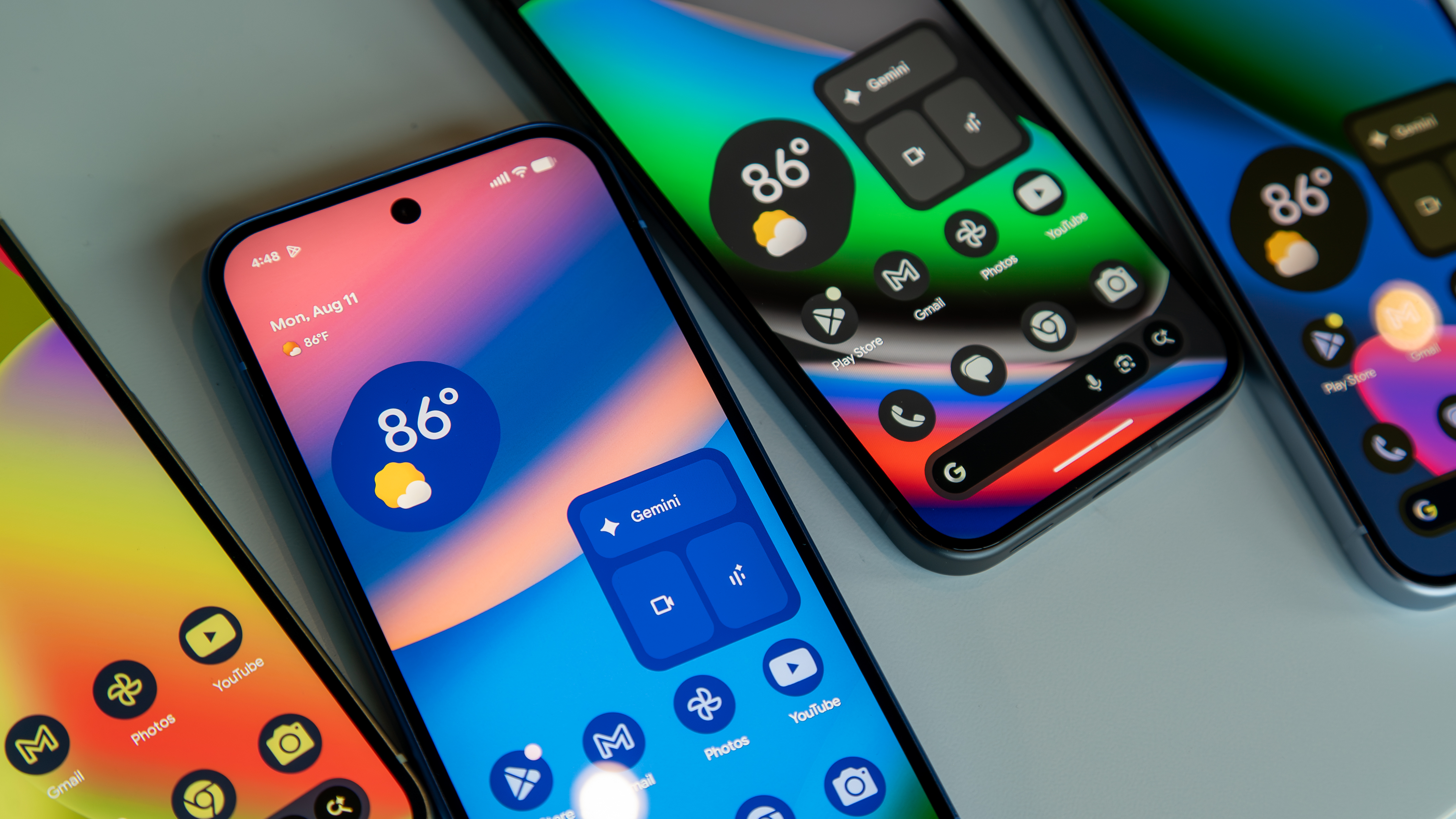
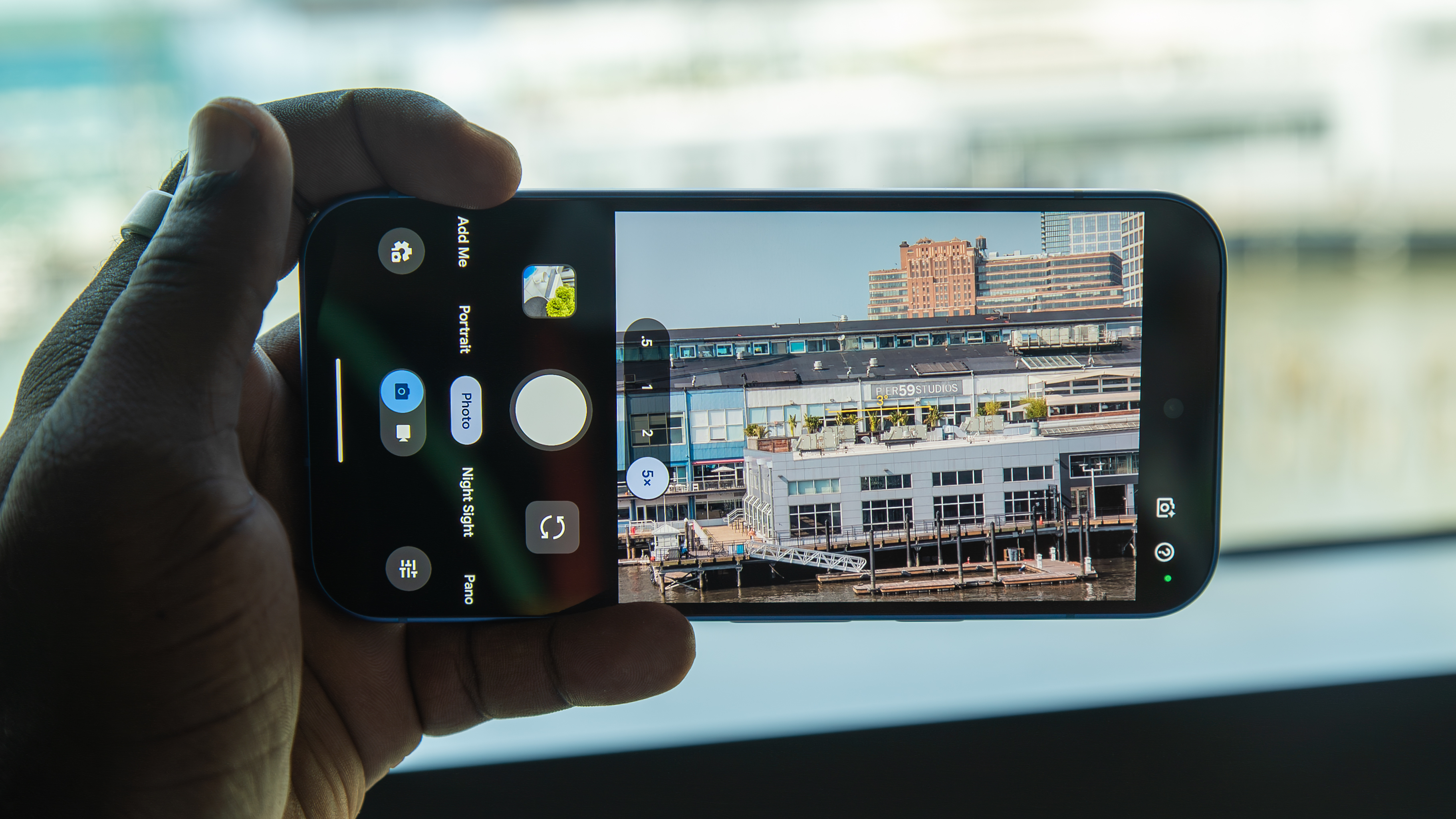
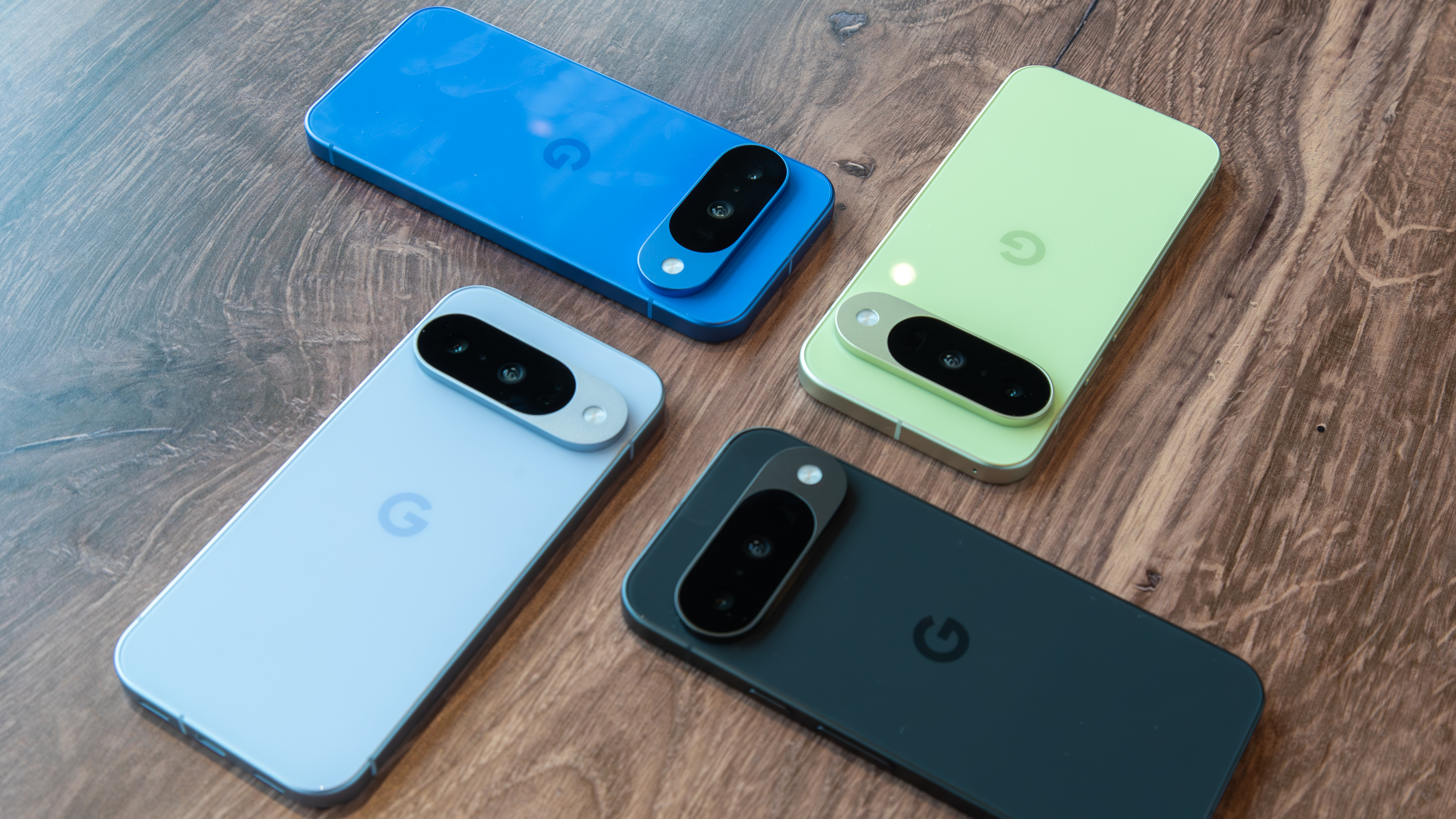
The design is largely the same as the Pixel 9, which isn’t a bad thing, especially when you look at the new Indigo color option. It’s a nod to the limited-edition Really Blue color that arrived with the original Pixel, and it’s probably my favorite color of the entire Pixel 10 series, although I'm not a huge fan of the glossy finish. Still, I hope this color sticks around, as the other options, Lemongrass, Obsidian, and Iris, are pretty boring.
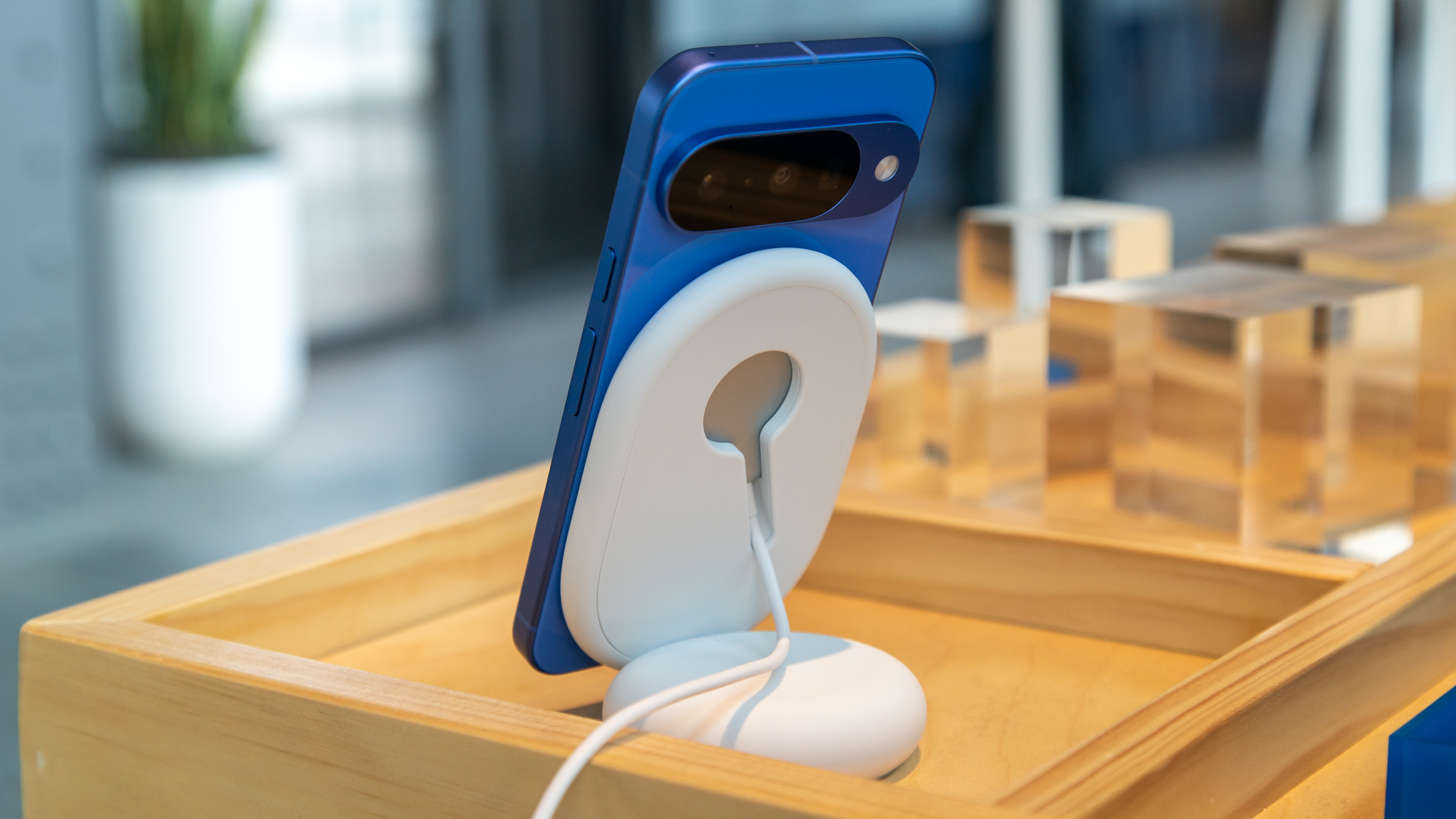

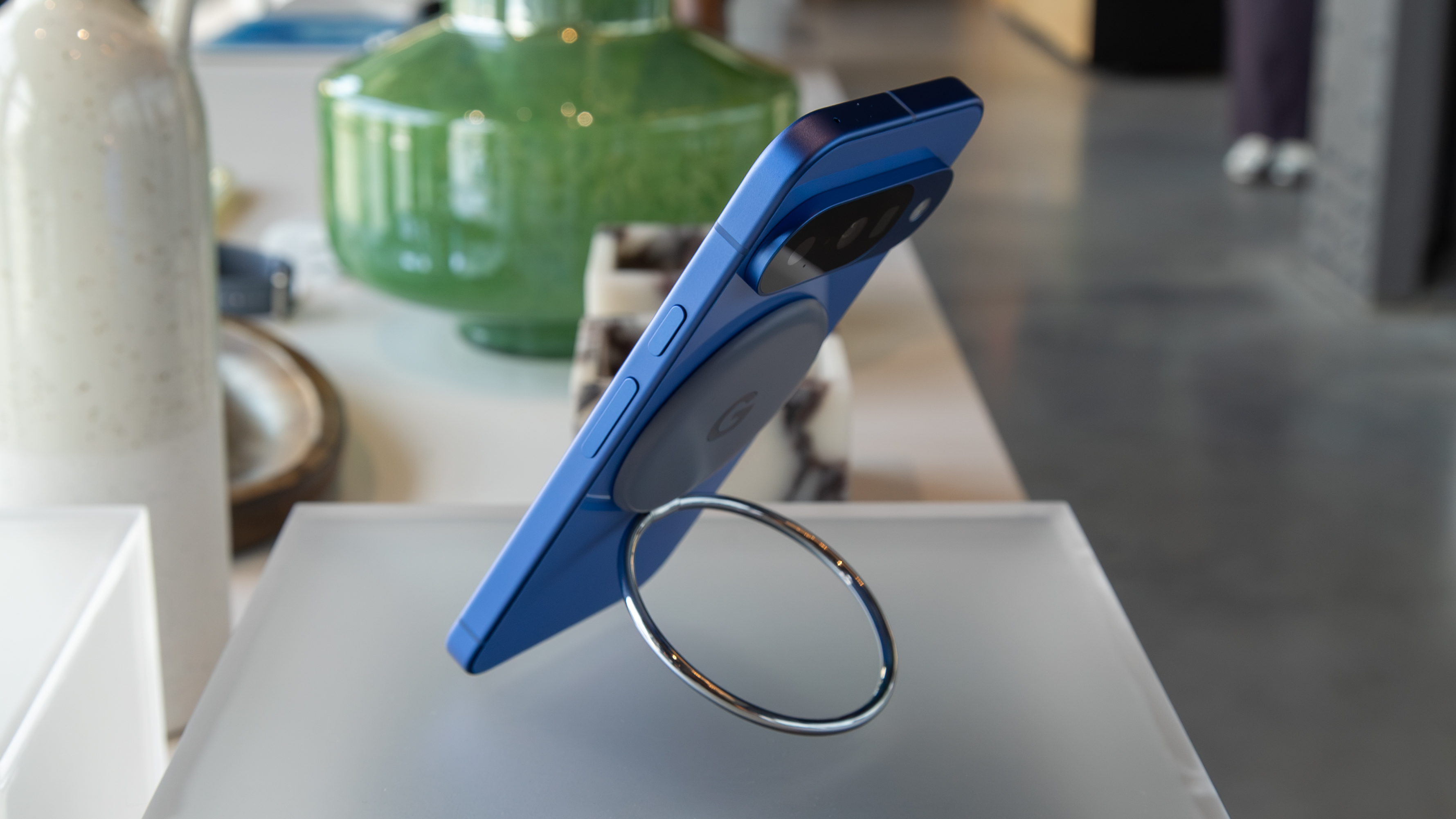
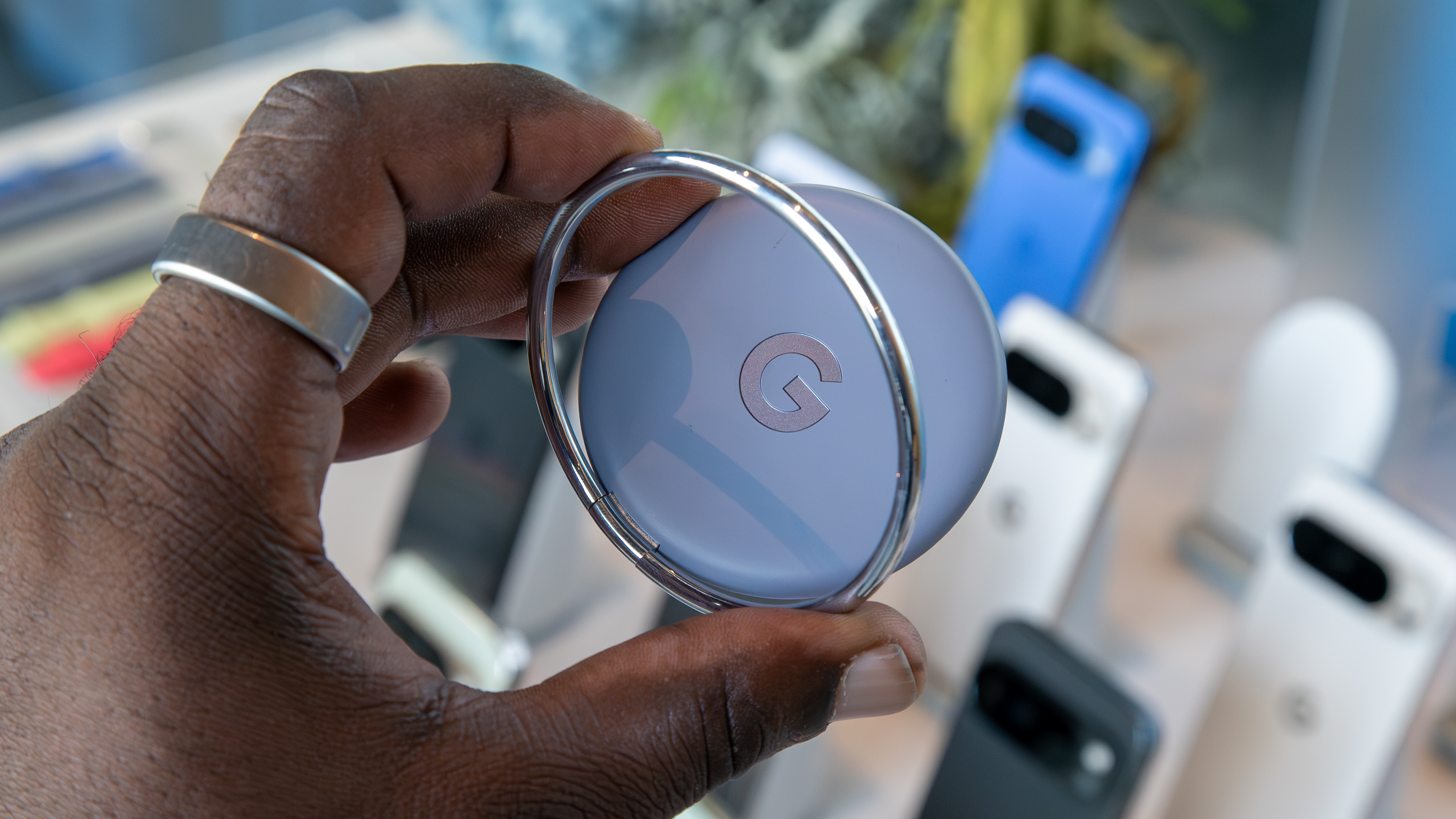
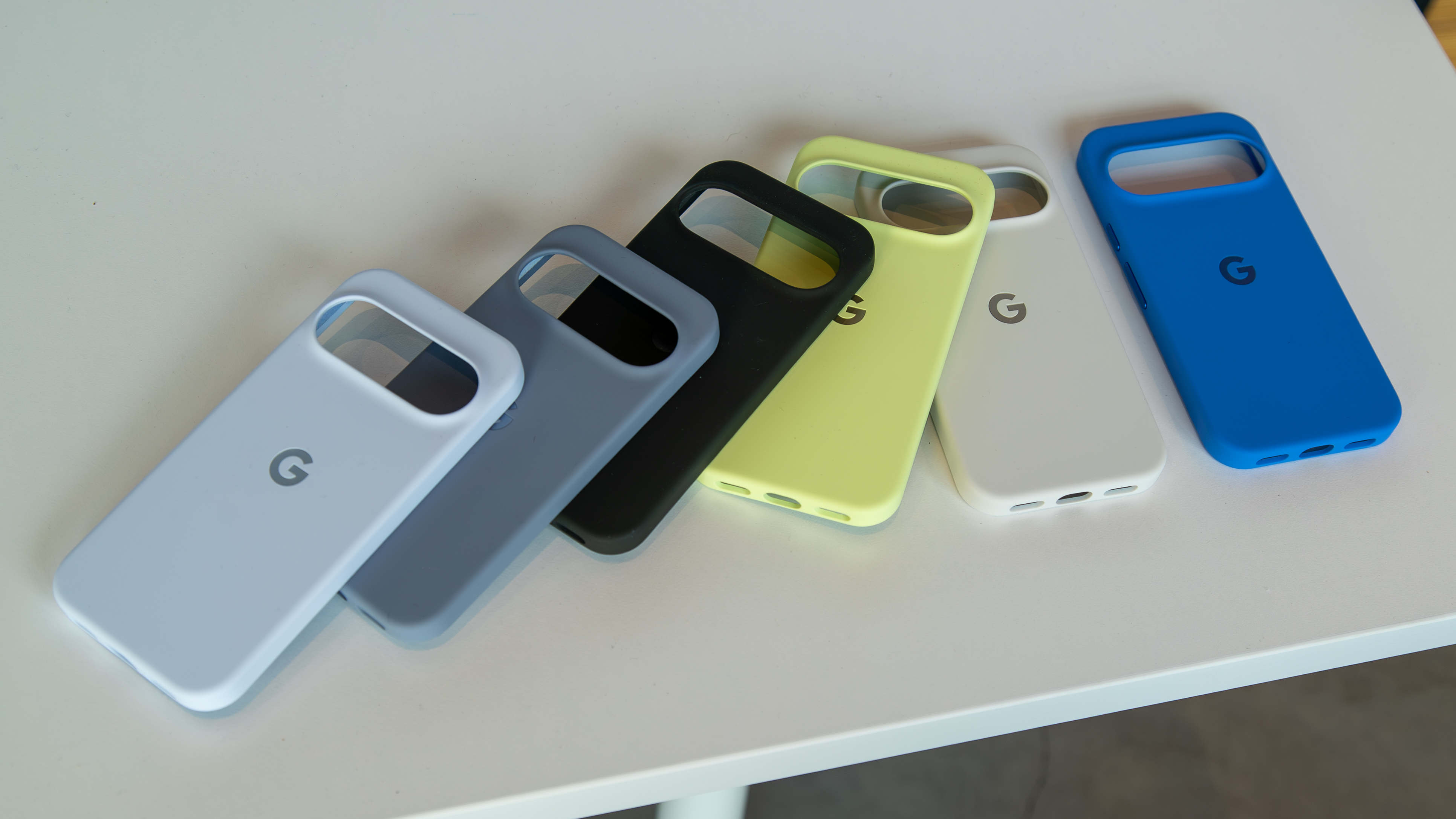
Other changes include a larger battery, a brighter display, and improved stereo speakers. Curiously, Google downgraded the Pixel 10 to Wi-Fi 6E from Wi-Fi 7 on the Pixel 9. However, I don’t think this is a significant issue, as Wi-Fi 7 routers aren't exactly ubiquitous, although others may not be as happy.
Google Pixel 10: New features
The Pixel 10 family is packed with new features, and, as you might imagine, many of them revolve around AI.
First up is Camera Coach, which can be activated in the camera viewfinder and uses Gemini's visual scene understanding to give you shot suggestions for what it sees, walking you through how to capture the look step-by-step. The things we tried at the hands-on were extremely impressive, and it felt like having an actual "camera coach" with me to help frame the shot.
Auto Best Take does exactly what's printed on the tin: it removes the need to switch to the gallery and manually select the "best" faces in a shot. The viewfinder automatically identifies faces in a shot using a white frame, then selects a "best" face in a series of images with a gold-trimmed frame.
Tensor will work its magic and automatically swap out faces with the best versions in what it identifies as the best overall image.
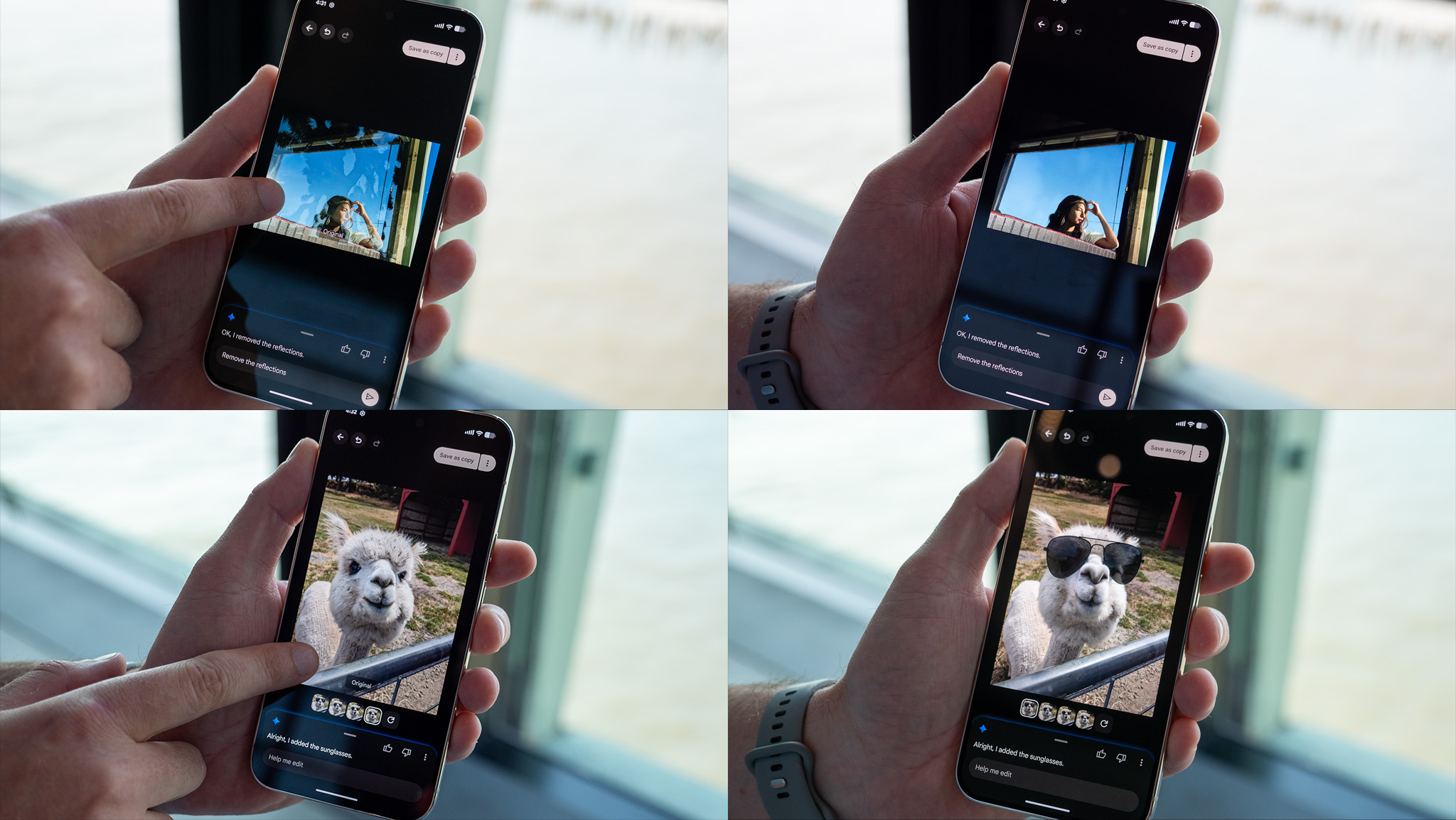
Edit with Ask Photos is a simple new way to edit your photos using natural language. Instead of delving through menus to find functions like the reflection eraser, you can now ask Gemini in Google Photos to remove them or do things like add sunglasses to a photo of a llama.
And for added convenience, every single photo taken is marked with content credentials that identify if it was edited by AI. Even photos without any AI editing contain these credentials, letting you know when something is too good-looking to be true.
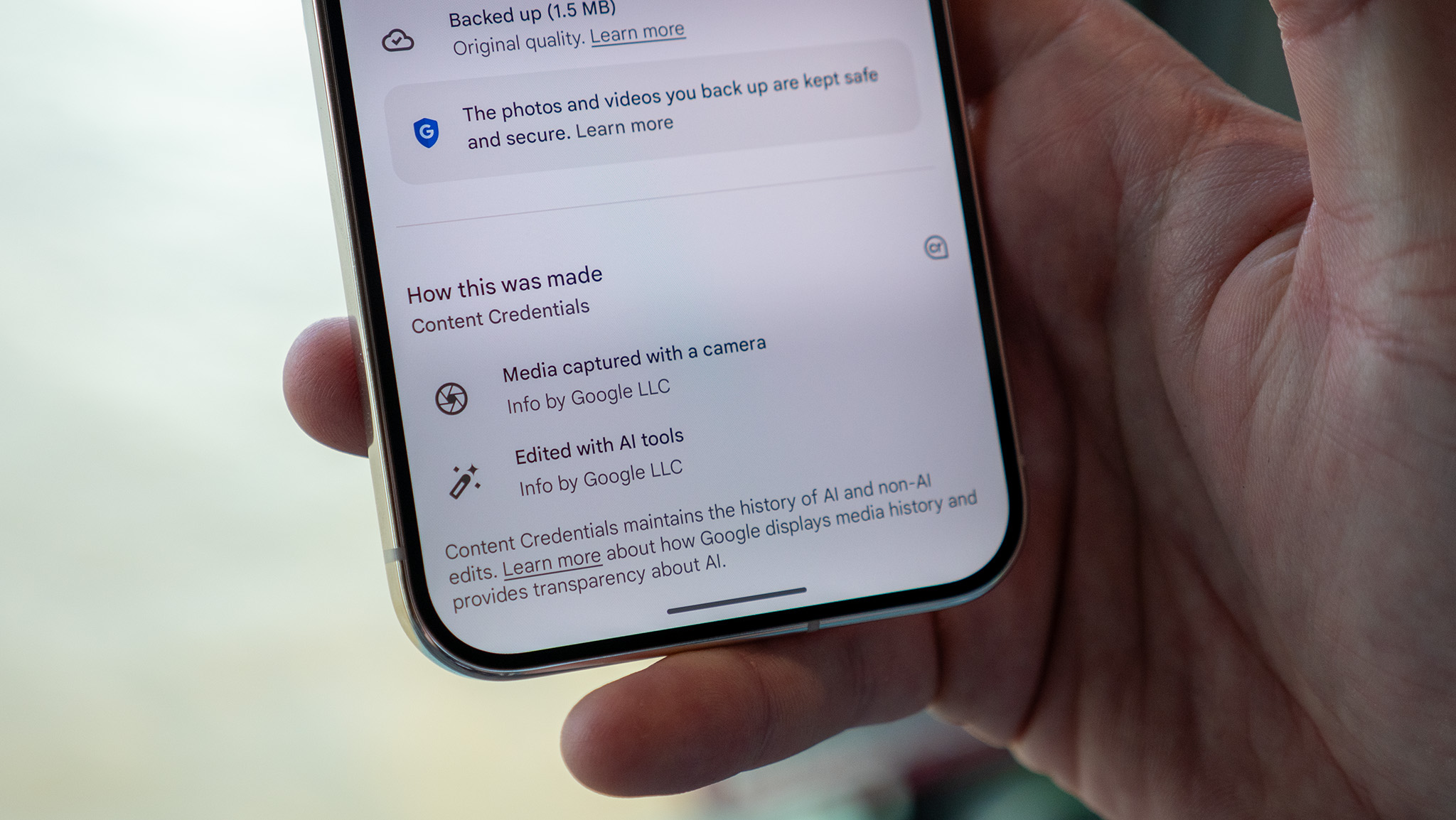
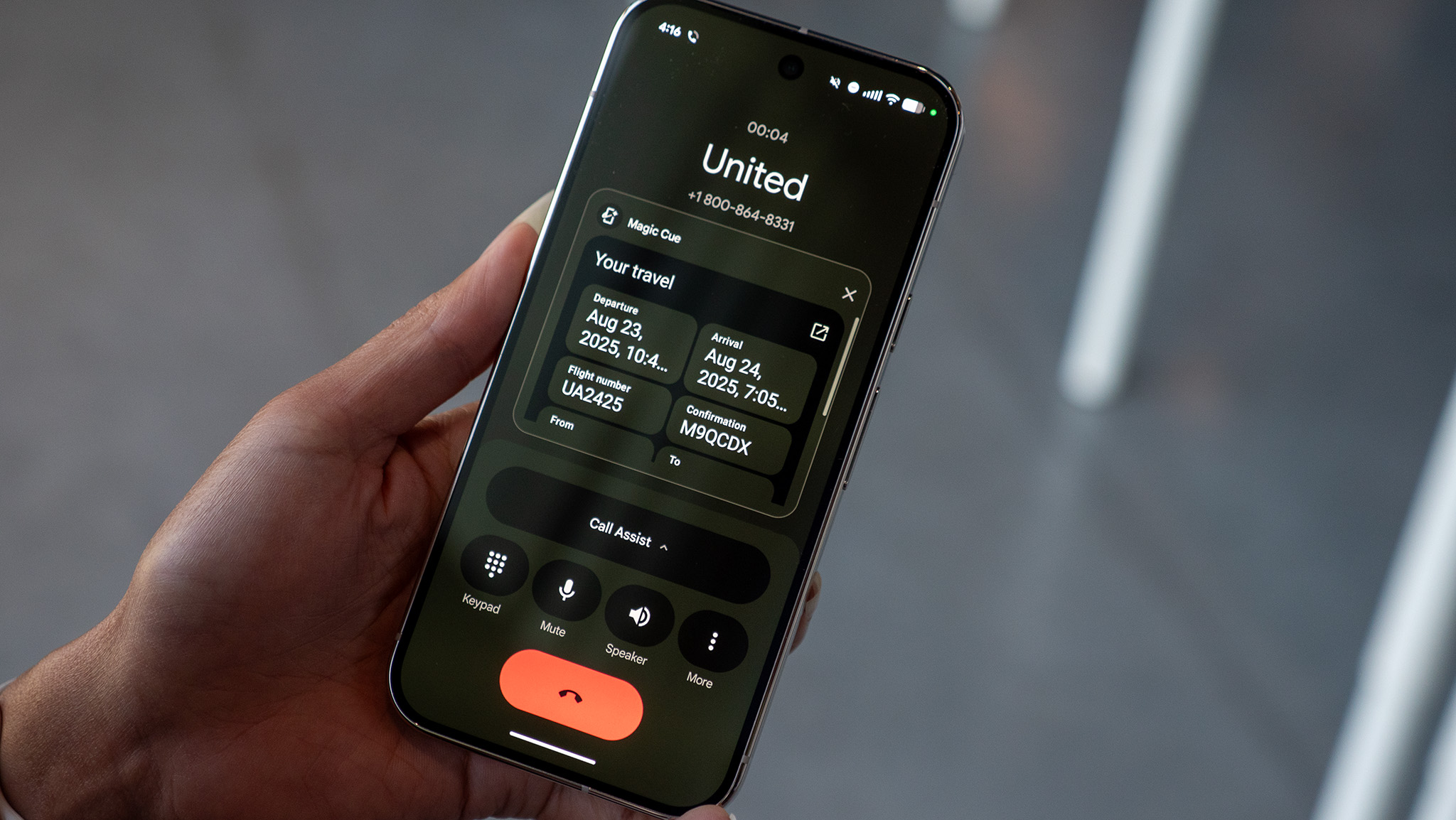
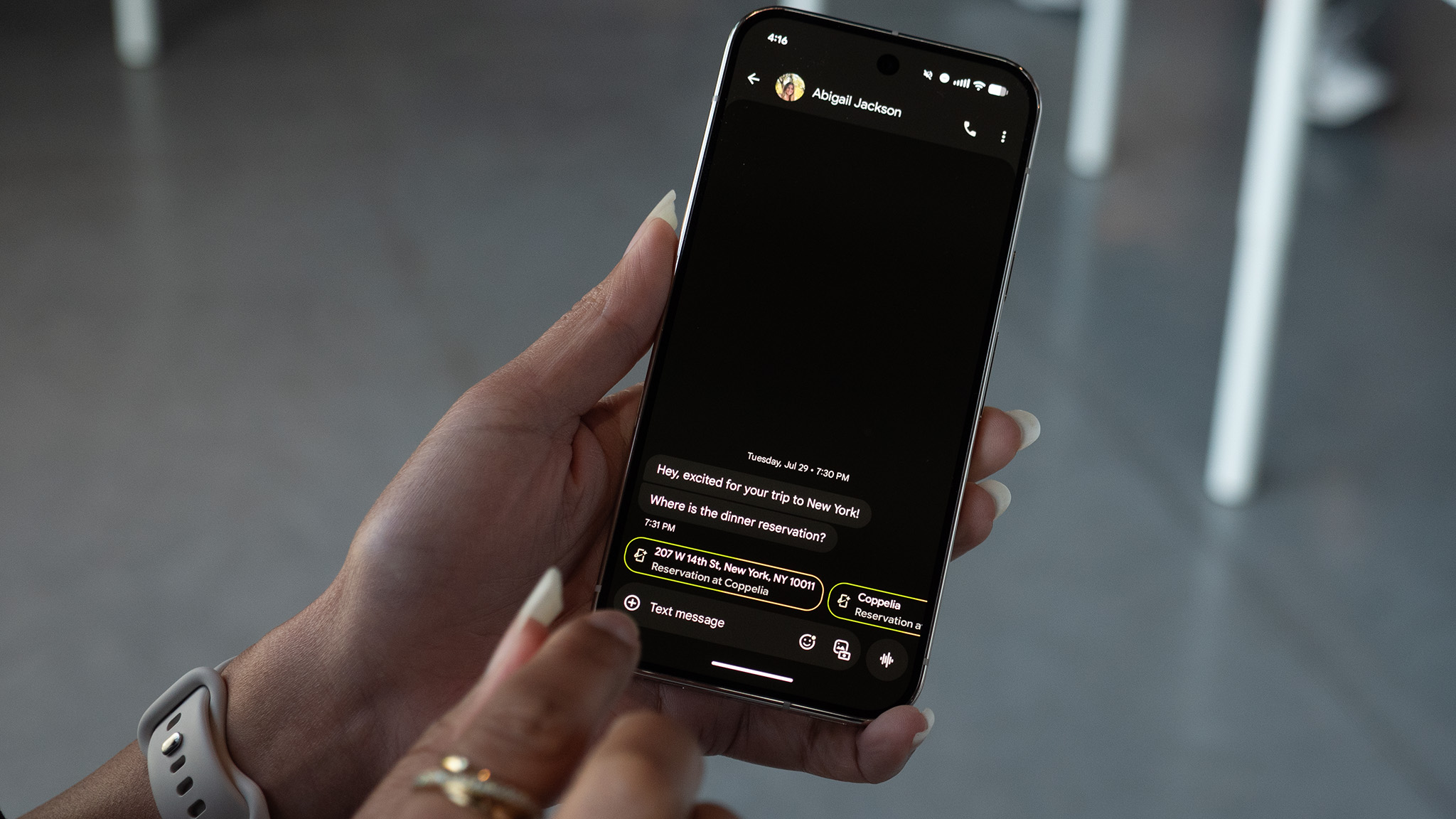

Magic Cue is the next evolution of smart actions on Pixel phones, giving users more context-sensitive actions throughout the entire OS. This includes new buttons (called chips) in Google Messages when addresses or calendar events are detected, as well as relevant information in places like the Dialer app.
The example above showed flight information found in Gmail on the screen when calling United Airlines.
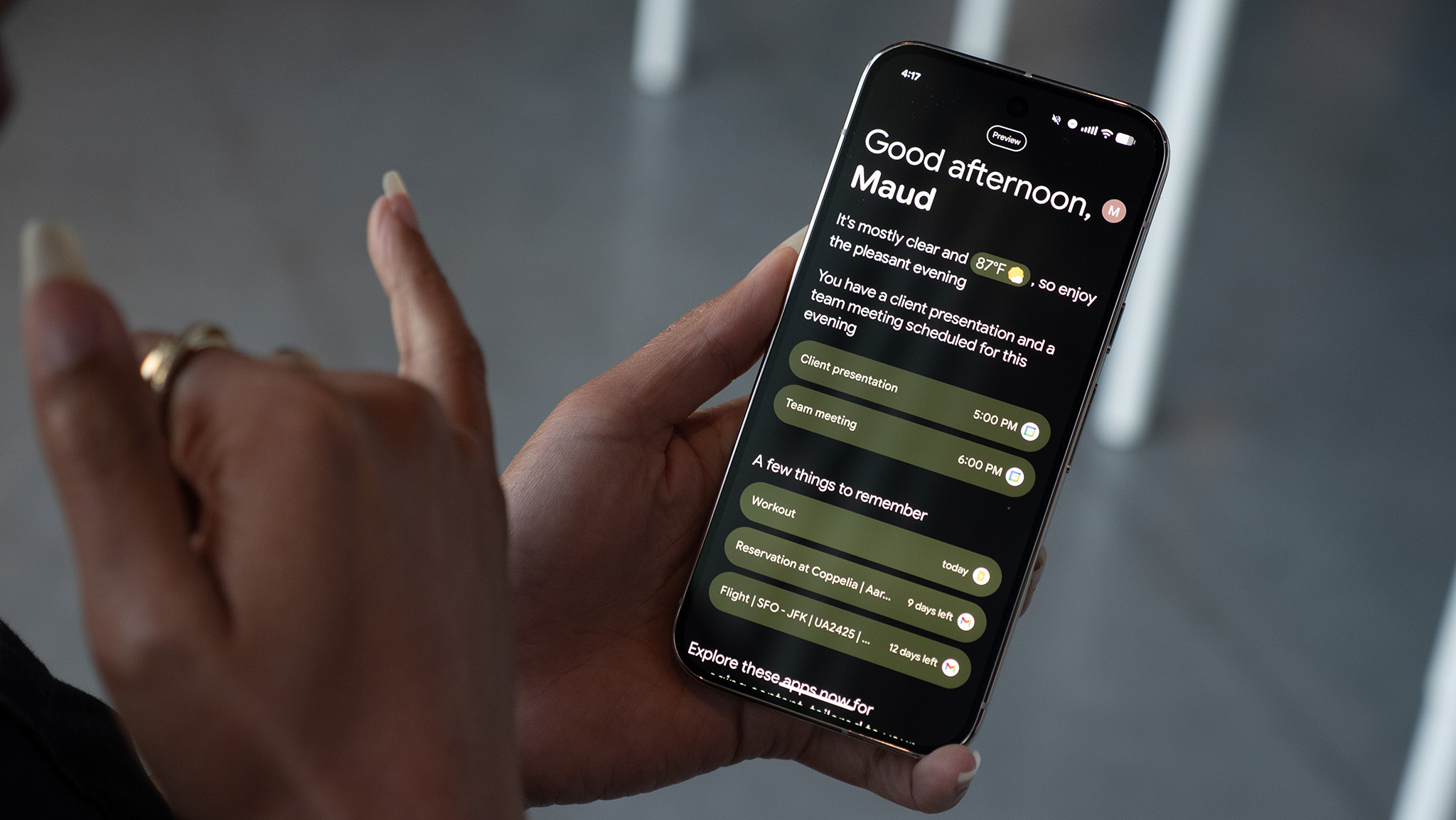

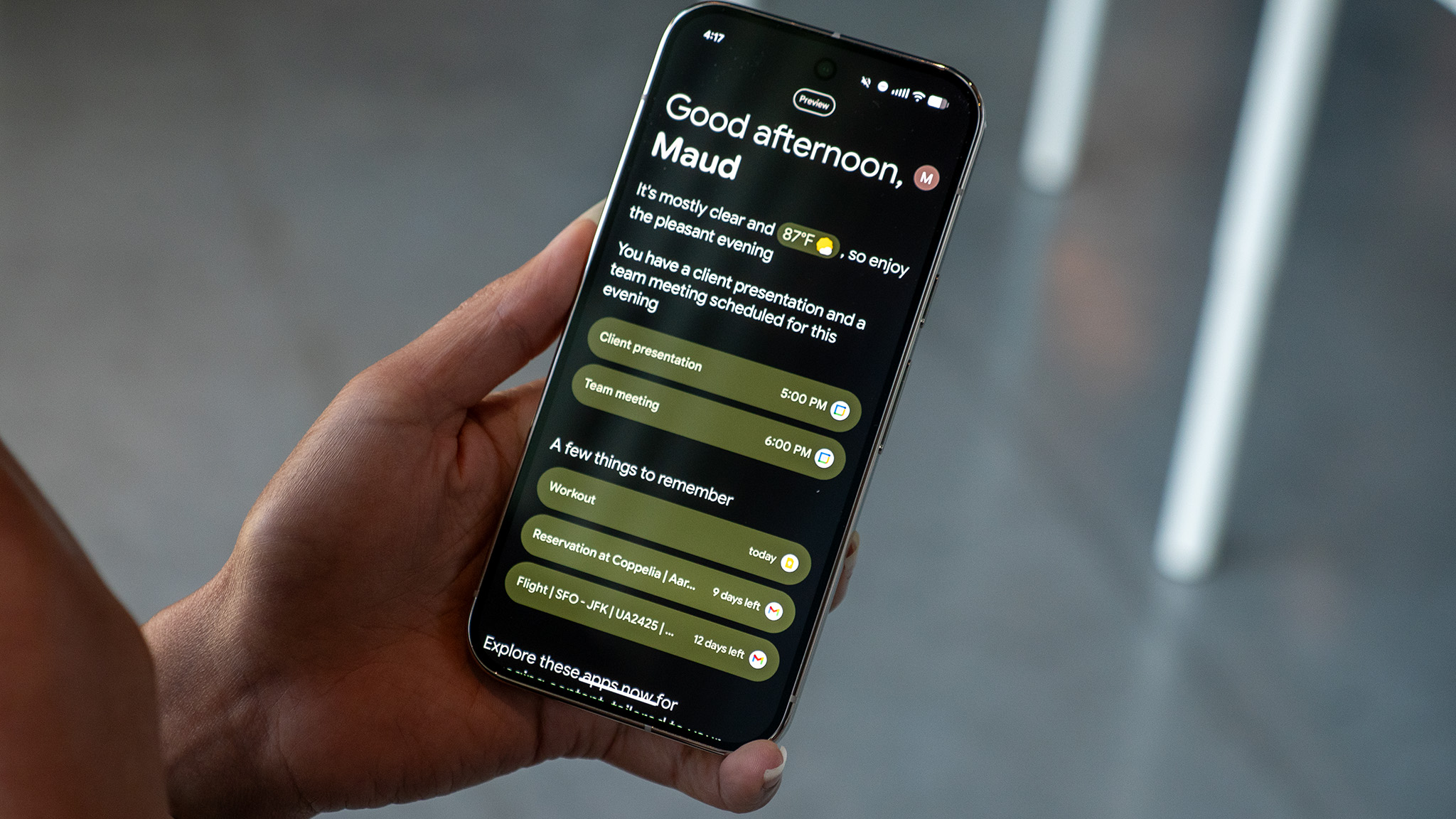
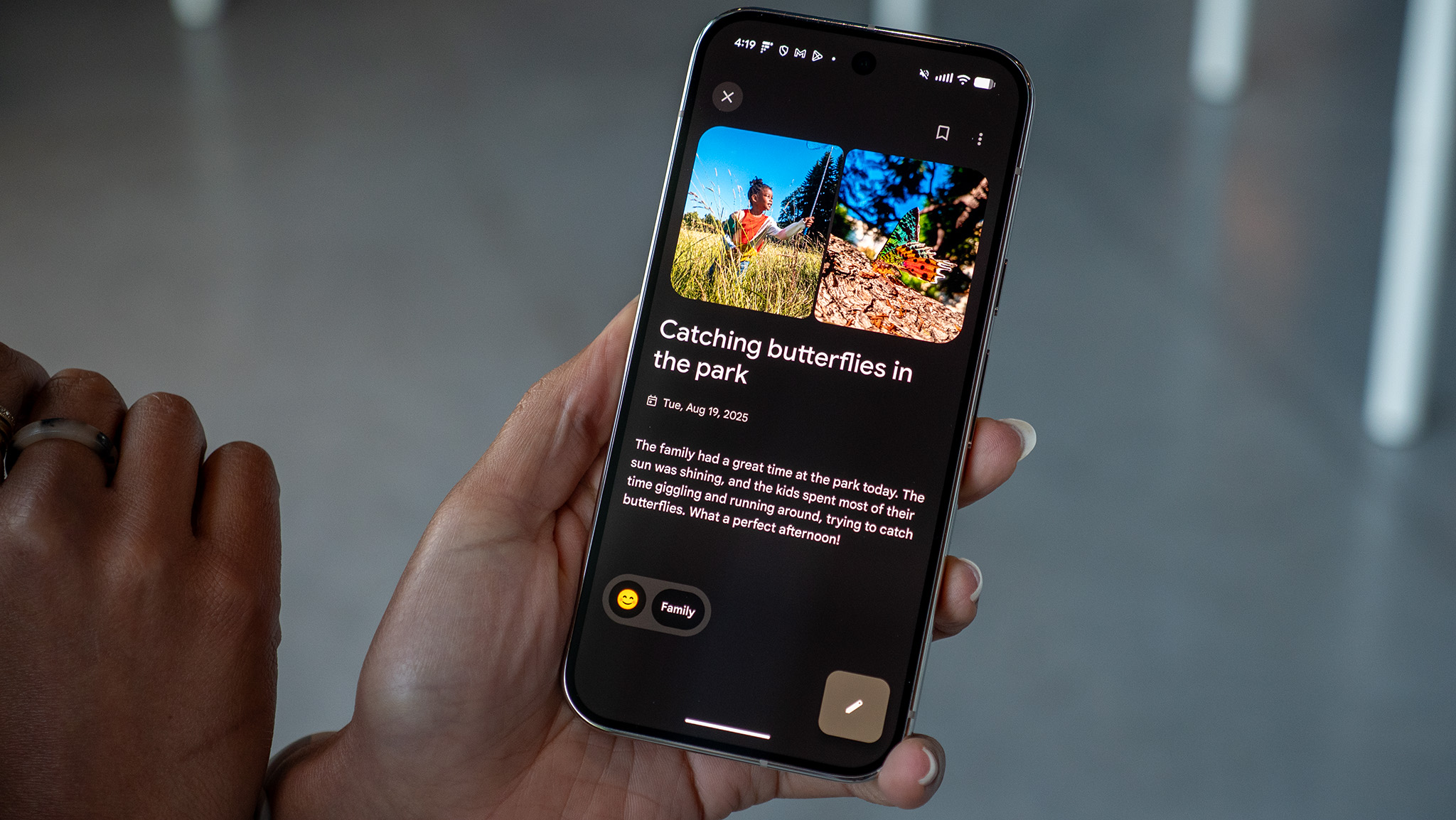
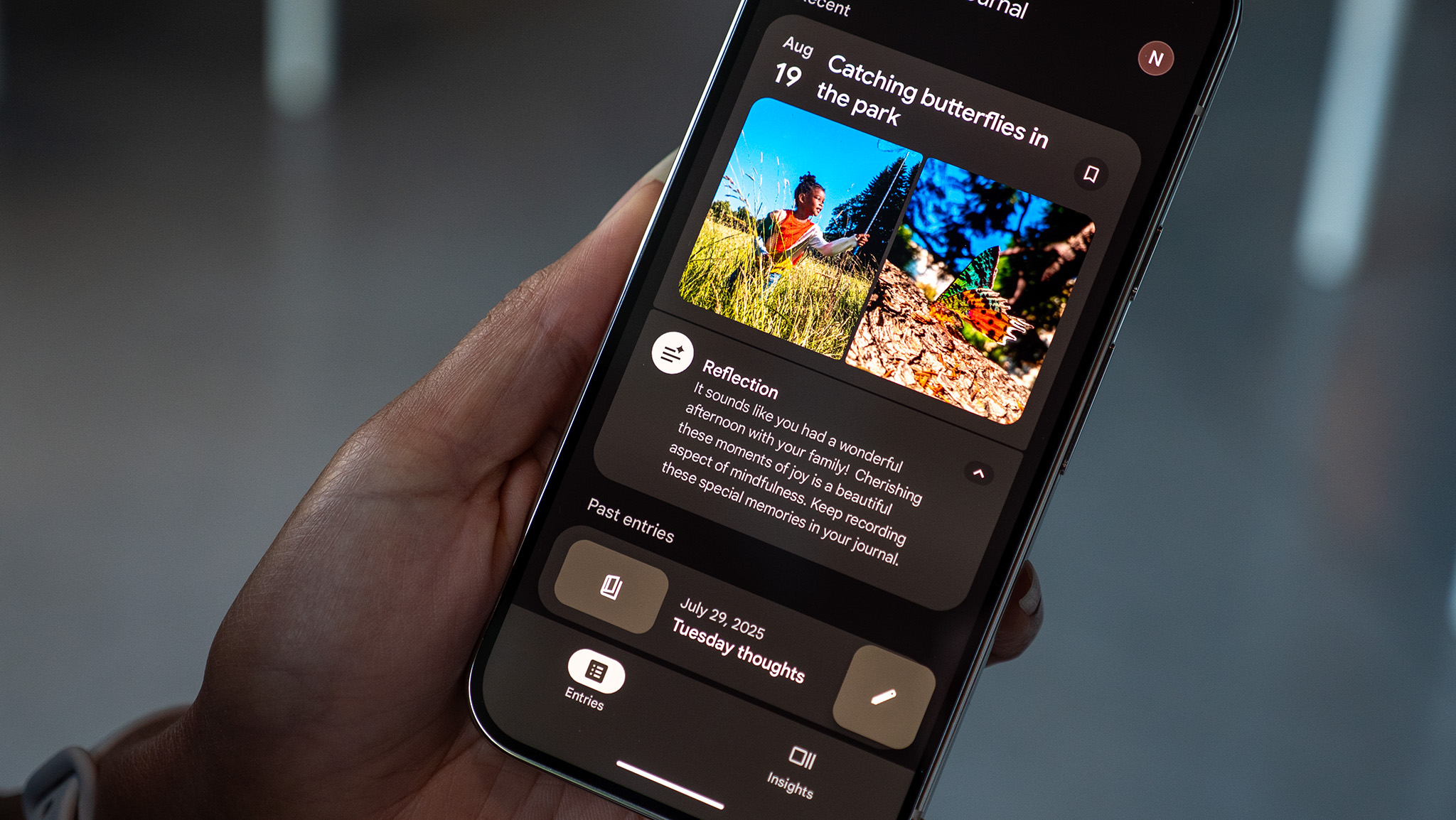
Morning Brief is essentially Google's answer to Samsung's Now Brief and will summarize what it thinks is essential for your day when you first pick up your phone in the morning. Hopefully, it's a lot better than Samsung's rather unimpressive solution.
Pixel Journal essentially combines Google Keep and Pixel Screenshots into one new app. It wasn't immediately clear how this differs from those two apps or if it effectively combines functionalities, so we'll have to further test it in the review.
We also got a taste of live call translation, which uses on-device AI to emulate your voice speaking an entirely different language in real-time.
Google Pixel 10: A new era
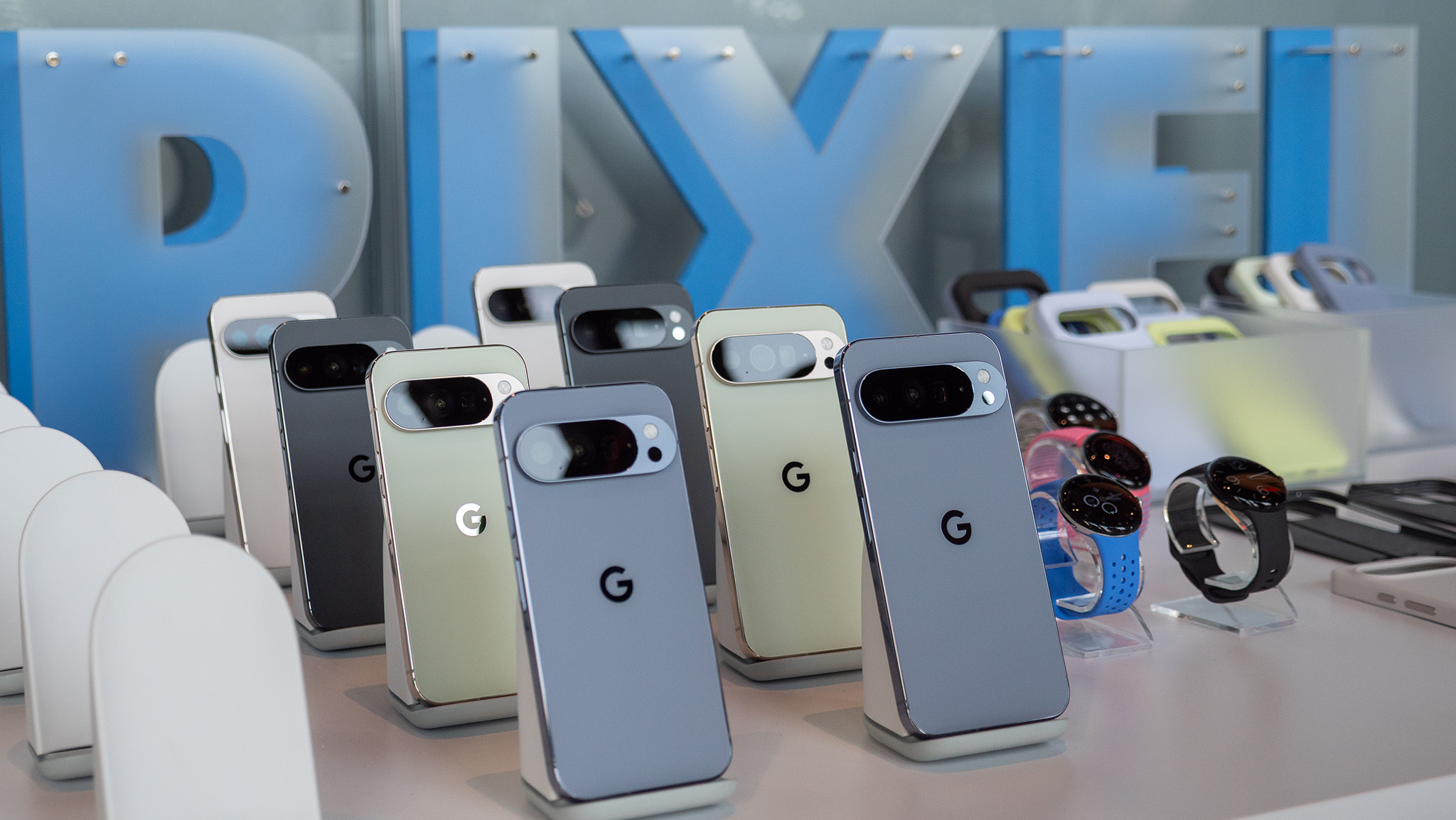
Three new Pixel 10 phones mark the start of a new era for Google, one in which Google is more in charge of its smartphone destiny than ever. Brand new custom silicon, a refined design, and a slew of new exclusive features mark a surprisingly important release in the Pixel series, especially when you consider how similar these look to the Pixel 9 on the surface.
The phones are available for preorder as of today, August 20, and start at $799 for the base Pixel 10. The trio of phones will hit store shelves on August 28.
For more news and information on Google's latest phones, check out our Ultimate Guide.

You must confirm your public display name before commenting
Please logout and then login again, you will then be prompted to enter your display name.
